Samsung S85F with a QD-OLED panel can surprise – and it surprises very positively. Even before the tests, we didn't think that in the case of TVs that are talked about in the context of "panel lottery," one could come across something that would benefit the user. However, in this case, particularly in the 55-inch version, it has fully succeeded. The QD-OLED panel, as befits organic technology, offers perfect, almost ideal black and contrast in cinematic conditions. The difference lies, however, in the way colours are reproduced – here it is simply outstanding. The colour gamut coverage is impressive, and after a gentle calibration, the colours become almost exemplary. Motion fluidity is equally high. The 120 Hz panel handles both sports and action films excellently. And if someone plans to connect a console to the S85F, they will receive a complete set of advantages: low input lag, variable refresh rate, Game Bar, and full support for HDMI 2.1. In everyday use, we were assisted by the Tizen system – closed, but extremely well-designed. It responds quickly, offers a rich selection of applications, and add-ons such as AirPlay and voice control make it hard to find something more complete in this category. Indeed, the S85F is not without its flaws. However, the balance of advantages and disadvantages is exceptionally favourable here. One could even get the impression that it is one of the best TVs in its price segment.
- Matching (Score)
- Our verdict
- TV appearance
- Where to buy
- Contrast and black detail
- HDR effect quality
- Factory color reproduction
- Color reproduction after calibration
- Smoothness of tonal transitions
- Image scaling and smoothness of tonal transitions
- Blur and motion smoothness
- Console compatibility and gaming features
- Input lag
- Compatibility with PC
- Viewing angles
- TV efficiency during daytime
- Details about the matrix
- TV features
- Apps
- Playing files from USB
- Sound
Samsung S85F OLED vs Samsung QN85F
Direct compare
S85F / FAE / FAU
QN85F
Available screen sizes: 55”
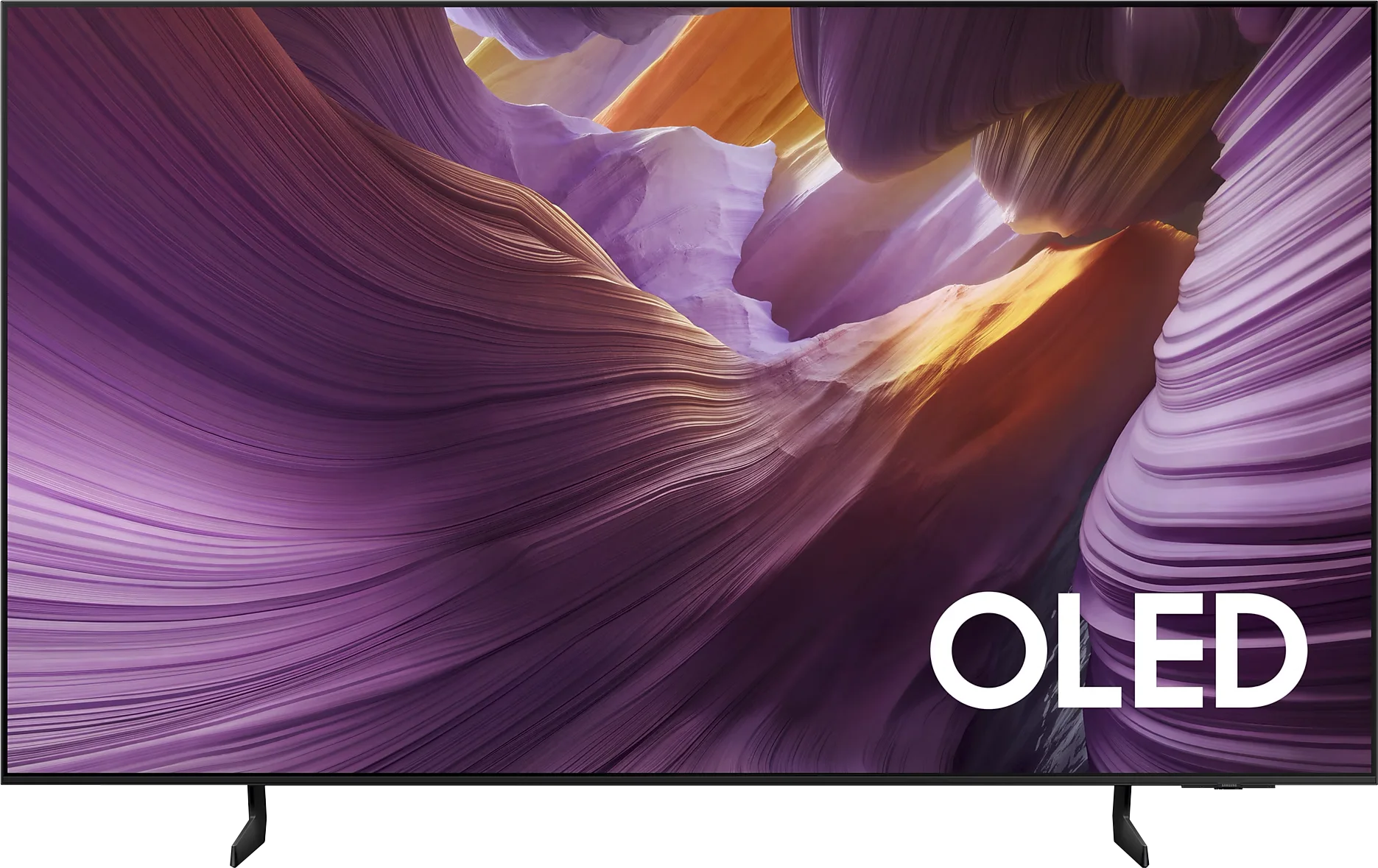
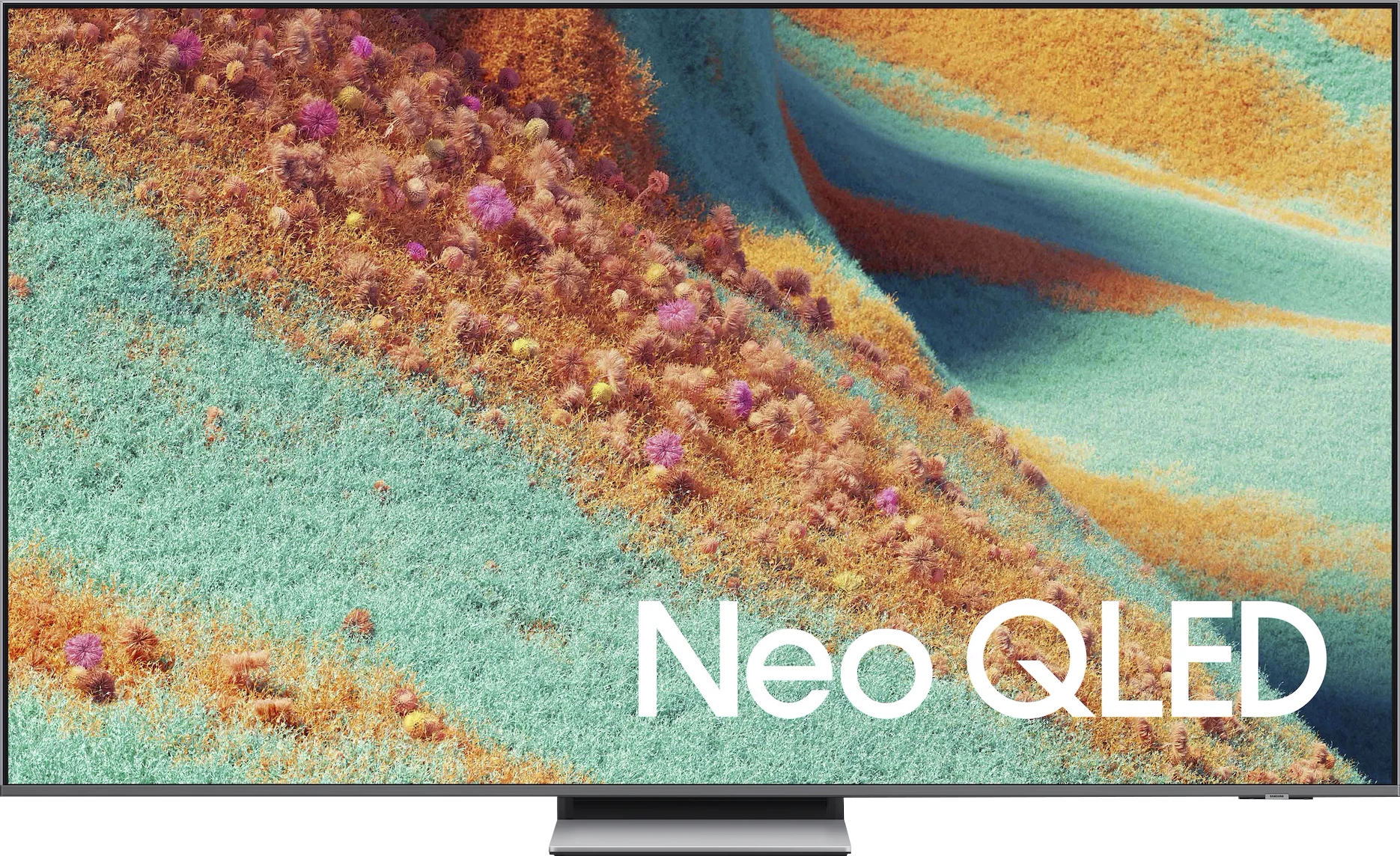
Panel type: QD-OLED
Resolution: 3840x2160
System: Tizen
Model year: 2025
Complete the survey to find out the result

Panel type: LCD VA
Resolution: 3840x2160
System: Tizen
Model year: 2025
Complete the survey to find out the result

Overall rating
8.0
7.6
Movies and series in UHD quality
8.3
7.5
Classic TV, YouTube
9.0
7.2
Sports broadcasts (TV and apps)
8.8
7.0
Gaming on console
9.3
8.7
TV as a computer monitor
7.6
8.4
Watching in bright light
5.1
6.9
Utility functions
7.3
7.3
Apps
8.7
8.7
Sound quality
7.2
7.6
Complete the survey to find out what fits your preferences
Advantages
Amazing black and contrast
Incredible colour palette coverage thanks to the QD-OLED matrix
Great picture in SDR and HDR content
High colour fidelity after calibration
Very good image smoothness – 120 Hz OLED matrix
Rich set of features for gamers: VRR, Game Bar, low input lag
4 HDMI 2.1 ports with full bandwidth of 48 Gbps
Advanced and smoothly operating Tizen system
Solar Remote with multiple options
High HDR brightness (even 1700–1800 nits)
Very good contrast and deep blacks
2 times higher number of dimming zones than its predecessor (55")
144 Hz panel with VRR and ALLM support
Unique Game Motion Plus feature – a unique smoother for gaming
Low input lag
Matte screen finish works great during the day combined with high brightness
Advanced Tizen platform: with AirPlay, SmartThings and a convenient solar remote
Well-designed stand. Hybrid – can be a central base or side legs
Solid sound with pleasant bass and Dolby Atmos support
Disadvantages
No recording function on USB and PiP
No Dolby Vision
Slightly cherry black in very strong external light (not noticeable when viewing in cinema conditions)
No HGiG function*
* This function disappeared with the software update 1110.7 – we are monitoring this situation continuously.
No support for Dolby Vision and DTS:X
No recording function from built-in tuners and PiP
Issue with HEIC files in the player
No proper support for HGiG* in game mode
*This seems to be a bug in the update, which we hope Samsung will fix quickly. We are monitoring the situation for you on an ongoing basis.
Our verdict
The Samsung QN85F is a television that perfectly demonstrates the purpose of the Neo QLED line. On one hand, it offers everything that today's user expects – high brightness, excellent fluidity, and full support for gamers. On the other hand, it is still LCD, meaning it comes with certain compromises. The question is whether these compromises genuinely hinder everyday use. In practice, it is hard not to be impressed by how the QN85F performs in HDR films. With a brightness level of 1700–1800 nits, watching dynamic scenes truly delivers the "HDR spark" that is lacking in many competing televisions. The lighting effects in films or series can literally overwhelm with their intensity, yet the television maintains detail and doesn’t turn the entire image into a washed-out blur. This is the kind of spectacularity that viewers investing in a new screen are looking for. Gamers also have reasons to be pleased (well, except for one drawback related to HGIG). It supports 144 Hz, variable refresh rate VRR, and automatic low latency mode ALLM. This is already a standard set in this class, but Samsung goes further and adds a unique feature called Game Motion Plus. With it, the image in games becomes smoother, reminiscent of the operation of motion smoothing, but without a noticeable increase in lag. This solution truly distinguishes the QN85F from the competition. On top of all this comes daily convenience. The Tizen system is fast, stable, and filled with applications that we actually use – from Netflix to Apple TV, and even YouTube and Disney+. Additionally, it supports AirPlay, has a comprehensive SmartThings platform, and the remote control, instead of overwhelming us with dozens of buttons, provides simple navigation and quick access to the most important features. This makes the QN85F a television that one simply wants to reach for on a daily basis. Indeed, one could highlight its shortcomings. There is no Dolby Vision, no USB recording, nor Picture-in-Picture, and the viewing angles typical of VA panels won't impress if you sit at a large angle. But all of this pales in comparison to how versatile and refined the QN85F is. During the day, it performs excellently in bright rooms; in the evening, it provides cinematic emotions in HDR, while in games it ensures fluidity and low input lag that other models would envy. Overall, the QN85F is a television that not only successfully continues the value-for-money tradition of its predecessor, the QN85D, but also expands it with several strong points. It is a piece of equipment that is hard to describe as anything other than a "safe choice" – one that will not disappoint in any scenario and is likely to meet the expectations of even the most demanding users.
TV appearance
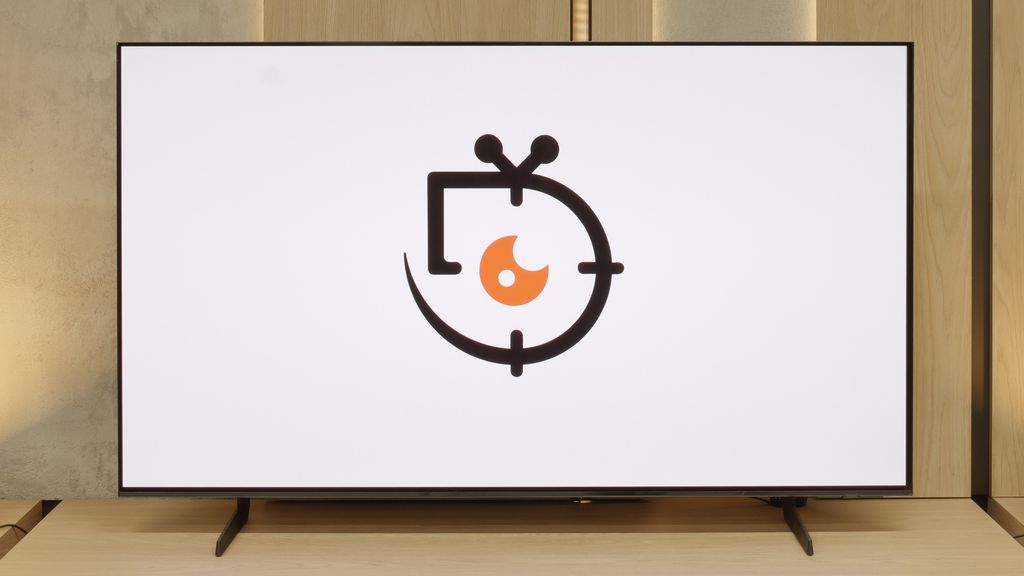
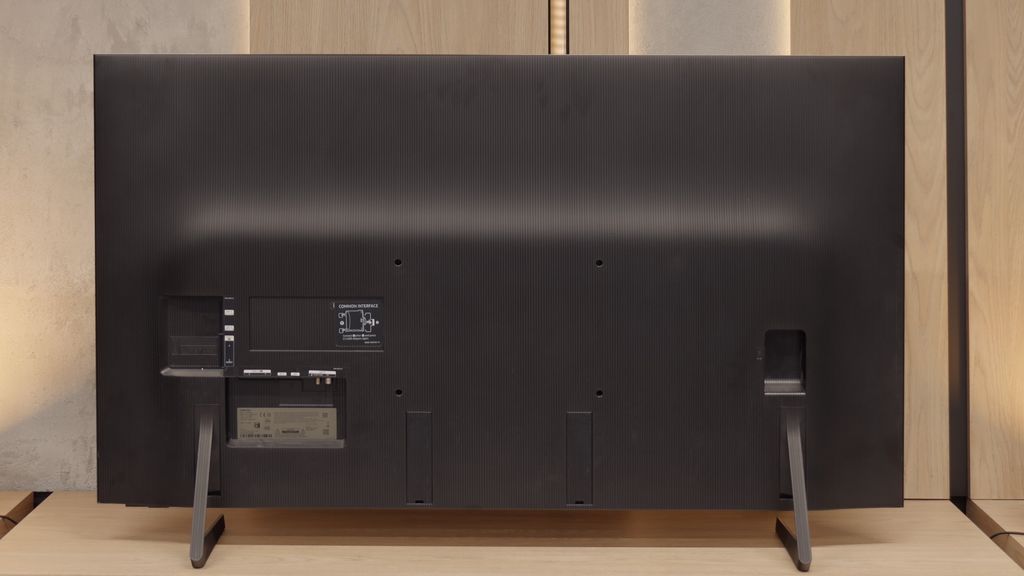
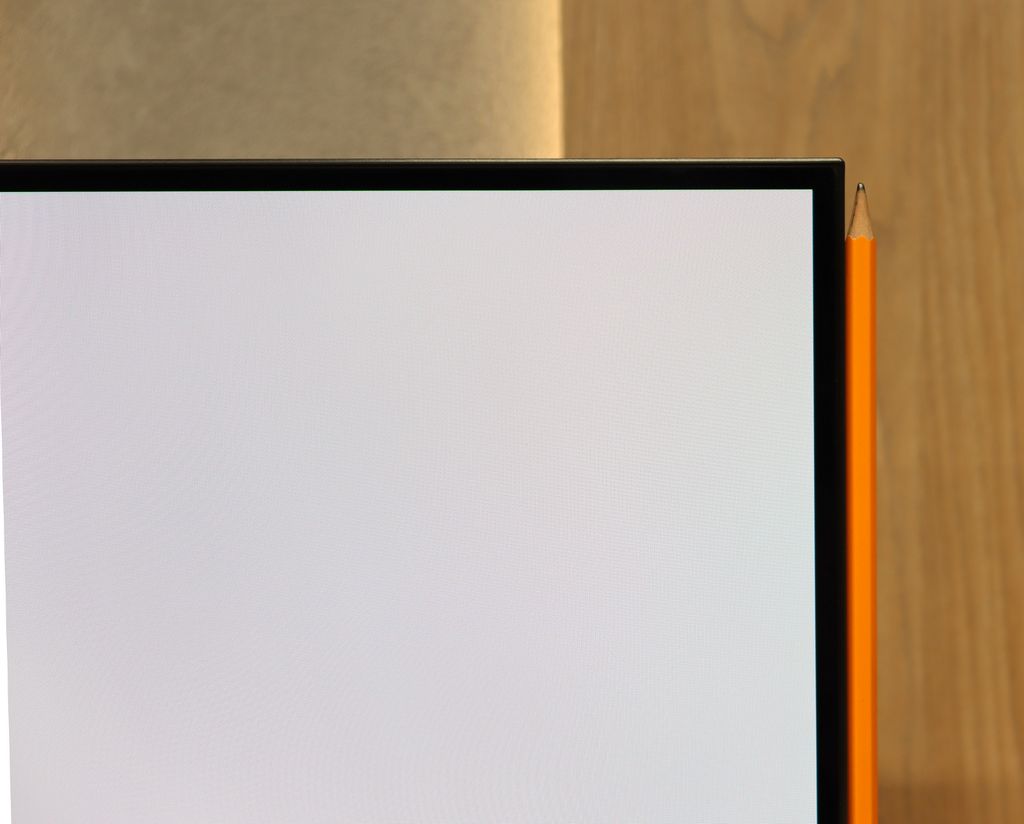
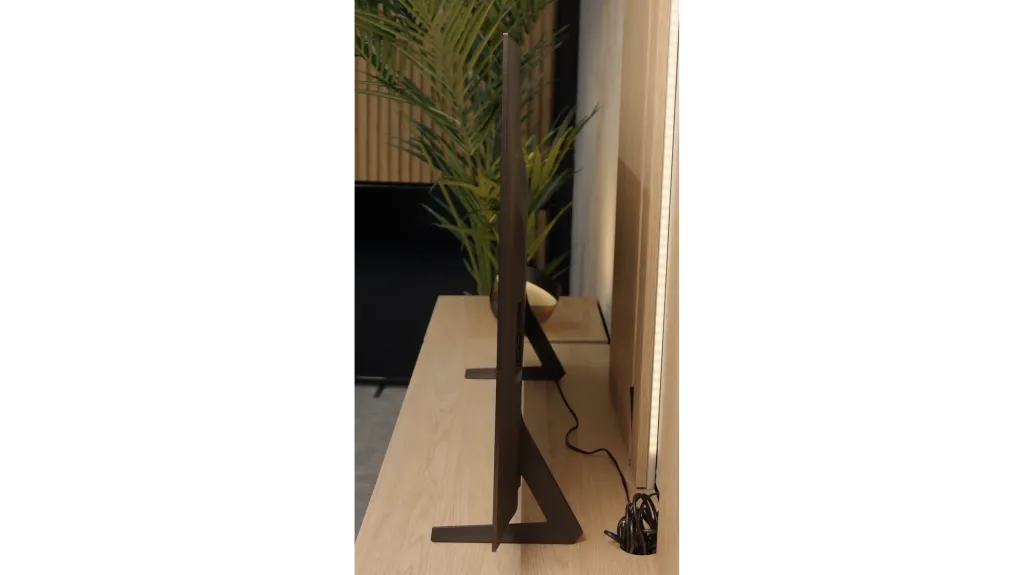


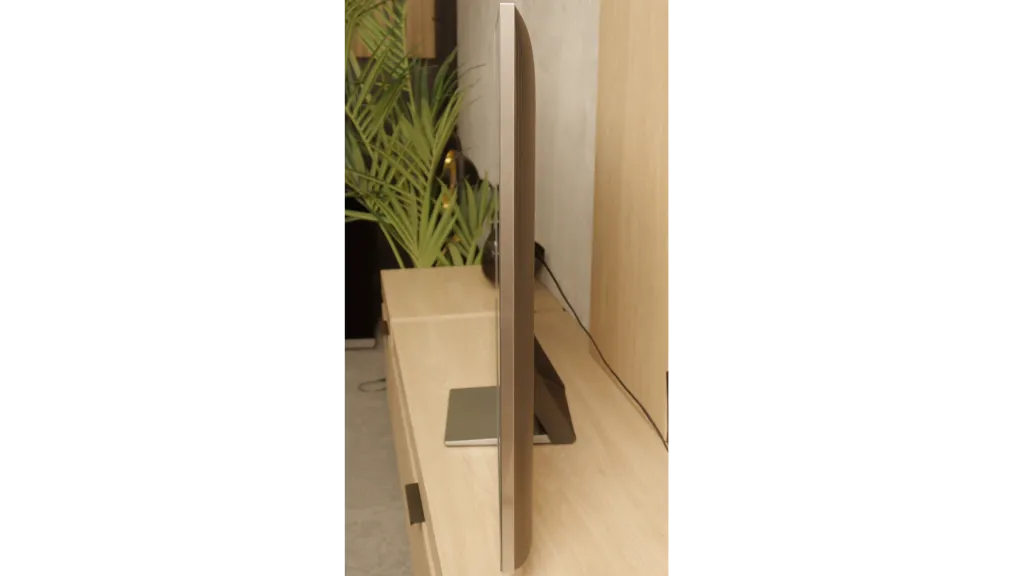
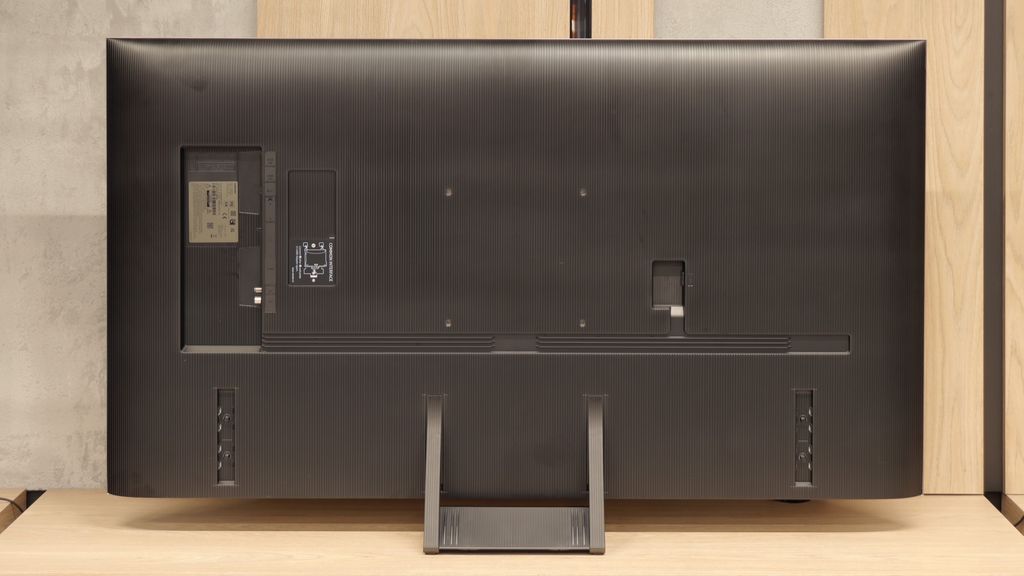
Contrast and black detail
10/10
7.5/10
Local dimming function: Yes, number of zones: 240 (20 x 12)
Contrast:

Result
∞:1

Result
∞:1

Result
∞:1

Result
∞:1

Result
∞:1

Result
101,800:1

Result
18,650:1

Result
47,050:1

Result
9,700:1

Result
4,350:1
Halo effect and black detail visibility:


The Samsung S85F in the 55-inch version has something exceptional about it – it features a QD-OLED panel. This may sound quite surprising, but it is a fact, at least in Poland. Thus, the question arises: is the difference noticeable compared to last year's S85D with a WOLED panel? Yes, although in this particular test – black levels and contrast – it hardly matters.
Regardless of the scene, the S85F delivers infinite contrast and perfect blacks that we expect from any OLED. These are results that can impress even the most demanding cinema enthusiasts. It's worth remembering that such deep blacks can only be offered by TVs with organic panels – and it doesn't matter whether it's WOLED or QD-OLED. So, if you dream of a screen that can "turn off" the light in a scene just as effectively as an art house cinema in a dark room, the S85F is one of those TVs.
Our editorial office received a 55-inch model with a VA panel. In the case of NeoQLEDs, which are televisions with Mini-LED backlighting, size is of immense importance, as the larger the screen, the more local dimming zones it can contain. This directly translates to higher contrast. In the variant we tested, we counted as many as 240 dimming zones, which is twice as many as last year's QN85D. Theoretically, such an increase should bring an equally impressive improvement in contrast. Unfortunately, practice showed something different – the QN85F offers results very similar to its predecessor. Indeed, in certain scenes with a lot of black or in areas where details in the highlights are crucial, you can see progress, but it is not proportional to the number of zones themselves. Mini-LED technology can be capricious, and sometimes a slight halo appears around small bright objects. This is a typical compromise one must accept with such a solution. Nevertheless, the contrast in the QN85F is at a very high level and will comfortably satisfy most users, even those who are more demanding. However, we have the impression that Samsung could refine the algorithms controlling the dimming, as we know from experience that they can perform exceptionally well in other models.
HDR effect quality
6.2/10
6.9/10
Luminance measurements in HDR:

Result
666 nit

Result
703 nit

Result
742 nit

Result
732 nit

Result
433 nit

Result
1248 nit

Result
860 nit

Result
1093 nit

Result
465 nit

Result
957 nit
Scene from the movie “Pan” (about 2800 nits)


Scene from the movie “Billy Lynn” (about 1100 nits)


Static HDR10


Dynamic: HDR10+
Dynamic: HDR10+


HDR luminance chart:
Samsung QN85F
HDR luminance
Samsung S85F OLED
HDR luminance
For an OLED, the Samsung S85F can truly shine – literally. Under favourable conditions, it is capable of generating brightness exceeding 750 nits. This is hugely significant, as most films are created with displays reaching around 1000 nits in mind. In practice, this means that in scenes with moderately large, bright elements, the image can look simply fantastic. However, it's not always so rosy. When there is a huge amount of light on the screen – whether it's an expansive, bright background or a whole frame filled with white – the S85F has to tone it down. In such scenes, brightness can drop by even four times. This limitation is well-known to essentially every OLED in this price segment, so we do not consider it a particular shortcoming. However, something that deserves praise and sets this model apart from the competition is its colour gamut coverage. Thanks to the QD-OLED panel, our colourimeter recorded values exceeding 100% DCI-P3 coverage and as much as 86% for the ultra-wide BT.2020 gamut. Such results are hard to find even in televisions costing several times more.
Although more than twice the number of dimming zones compared to its predecessor did not translate into a spectacular jump in black levels and contrast, we definitely felt it in the HDR effect itself. The QN85F is up to 50% brighter than last year's model, making a huge impression in dynamic scenes. The peak brightness can reach almost 1700–1800 nits, which is truly impressive for Mini-LED in this class. The best part is that almost regardless of the scene being watched, the HDR effect remains strong and vibrant. In four out of five test scenes, brightness was maintained around 1000 nits, a level that in most cases allows the viewer to experience the true magic of this format. Of course, in scene number 4 from the film Sicario 2, the limitations of Mini-LED technology become apparent – the brightness of the helicopter’s small light drops to around 500 nits. This result is not stellar, but it is still much more acceptable than last year's model. Samsung therefore deserves applause, as the improvement in brightness in the QN85F is drastic compared to its predecessor. However, it is a shame about a certain trend visible in this year's televisions – the manufacturer has worsened the colour gamut coverage. Although the QN85F has a QLED panel, its score of around 90% DCI-P3 is average, and in the most demanding films, it can lead to less vibrant colours than its predecessor. Despite this shortcoming, the overall HDR effect stands at an excellent level and truly makes a big impression in this class of devices.
Factory color reproduction
5.5/10
4.8/10


Factory Mode
After calibration


Factory Mode
After calibration
Samsung, as befits a manufacturer with ambitions, has equipped the S85F with a mode called Filmmaker. Its task is simple: to ensure that the colours on the newly purchased television are as true to what the director intended as possible. Sounds great… but, as is often the case, a theory that sounds great does not always translate into perfect practice.
In the tested unit, it quickly became apparent that the image – due to an excess of blue and red – looked as though someone had overdone the saturation a bit. As a result, quite significant colour errors occurred, particularly in 4K content. Moreover, there was a problem with brightness – the S85F could brighten most scenes more than it should, taking away their intended mood.
Fortunately, Samsung televisions, including the S85F, offer an impressive number of settings for advanced calibrators. This means that we could test what this panel is truly capable of when placed in the right hands.
Samsung QN85F offers several preset picture modes, but by default, when the television is turned on, it starts in "Eco" mode. And we could actually end the discussion here, because for such a model, using this setting makes no sense – the picture is washed out, unpleasant, and far from what we expect from a television of this class. We therefore carried out our tests in the best of the available modes, which is the Filmmaker mode. Its purpose is to faithfully reproduce what the directors saw during the filming of the movies, and indeed this is the setting that performs best among all factory options. However, this does not mean that it is without flaws.
Both in SDR and HDR, the QN85F quite strongly emphasised warm colours. This resulted from deficiencies in white balance, where there was a distinct lack of blue. Additionally, the picture was sometimes overexposed – as indicated by both the gamma brightness characteristic and the EOTF curve, which showed that the television tends to blow out scenes. In SDR, the colour reproduction errors (Delta E levels of 4-5) were still acceptable, but in HDR the discrepancies became quite large and clearly deviated from what the creators intended to show us. Fortunately, Samsung provides a wide range of calibration tools in its televisions, so – as always – we proceeded with professional calibration to see how much could be improved.
Color reproduction after calibration
9.3/10
8.5/10




Thanks to the vast number of settings in the menu, we managed to bring the S85F to nearly an ideal level. The white balance in SDR content? Literally perfect – deviations do not exceed the value of “1”. So we can confidently say that in materials with not very high dynamics, we have an image close to reference here.
In HDR content, slight issues have arisen, but they are not significant in practice – most errors fall below the threshold of perceptibility, which is the value of “3”. We also managed to tame the S85F when it comes to brightness management – the EOTF curve, even in movies, holds an almost perfect line. This is one of those cases where after calibration, you can comfortably forget about the settings and simply enjoy films and series at the highest level.
After calibrating the film mode, we managed to tame the colours in both modes to near perfection – most of them did not exceed an error value of 3, which is the threshold of perception by the human eye. The image became more natural, fuller, and at the same time free from bloom, which was noticeable right after taking the television out of the box. This shows the great potential of the QN85F and how well it responds to precise settings. However, this does not change the fact that certain technological barriers cannot be overcome. Despite the enormous benefits of calibration, there are still limitations of the panel itself. Although the number of dimming zones has doubled compared to its predecessor, the algorithms controlling the backlighting can manipulate brightness in their own way. Sometimes this leads to slight colour inaccuracies or gently visible halo effects around bright objects. Nevertheless, the experience after calibration is truly pleasant and demonstrates how good a screen the QN85F can be if we just take a moment for proper settings.
Smoothness of tonal transitions
7.9/10
9/10












Thanks to the QD-OLED panel, the colour blending on the S85F performs really very well. It is particularly worth noting how it handles the darkest, most demanding scenes – where most televisions start to struggle, this model operates almost perfectly.
Interestingly, a slight stumble can be noticed in those easier, brighter shots. There is then a minimal banding of colours, but it is so subtle that it is hard to believe it would realistically interfere with anyone's viewing experience.
Slight colour errors are often practically unnoticeable; it is the fluidity of tonal transitions that is a category to which even a less experienced viewer will pay attention. Unfortunate bands and artificial lines can completely spoil the perception of the image. Fortunately, the QN85F handles this aspect almost perfectly. Gradients are smooth, transitions between colours seamless, and there are no artificial streaks or harsh lines separating the hues on the screen. The image remains coherent, and nothing distracts our attention from the content. Only under very extreme conditions did we notice slight issues in the grey palette, but this is a drawback typical of most televisions and is hard to consider a serious negative. In practice, while watching films, we encountered no problems.
Image scaling and smoothness of tonal transitions
7/10
7.5/10
Smooth transition function


Image without overscan on the SD signal


The tonal transition smoothing function in the S85F works really effectively – it can completely eliminate the problem of visible banding in very poor quality materials, such as those from YouTube. Unfortunately, even the lowest level of this option comes with compromises. Noise reduction is aggressive enough that it can smooth out the film grain that many of us consider a key element of the cinematic experience. At the "Standard" level, we did not notice that this function removed anything significant from the image, so we can recommend this setting. On the other hand, the "High" level is a different story – it can smooth out not only noise but also subtle, desirable details such as the texture of objects.
As for image scaling, the S85F performs very well. The material looks sharp, and the only minor imperfection is slightly visible aliasing of contours. And there’s still the persistent issue with Samsung televisions – overscan. This can cause the frame to be slightly cropped in certain scenes, which is worth keeping in mind when watching very old content.
Although the native tonal transitions on the QN85F with 4K material perform excellently, we do not always deal with content in the highest resolution. At that point, it becomes crucial how the television handles upscaling and digital image processing. This process is managed by Samsung's proprietary processor – AI NQ4 Gen2. In practice, it operates very efficiently. If visible colour banding or other undesirable phenomena occur on the screen, for instance, in materials from YouTube, they can easily be smoothed out using the "noise reduction" feature. Set to a medium level, it improves tonal transitions without excessively blurring desired details. However, it is important to remember that – as with most Samsung televisions – this function heavily interferes with the film grain. Therefore, during cinematic screenings, it is wise to use it cautiously to avoid losing the natural character of the image.
The upscaling itself looks very good. Test materials in lower resolutions were displayed sharply and clearly, with a great deal of detail. The only downside remains the issue of overscan, which is the trimming of the edges of the screen. In most situations, this is not noticeable, but with very old materials below HD quality, there may be cases where a fragment of the image from the left side gets slightly cut off.
Blur and motion smoothness
8.5/10
7.7/10
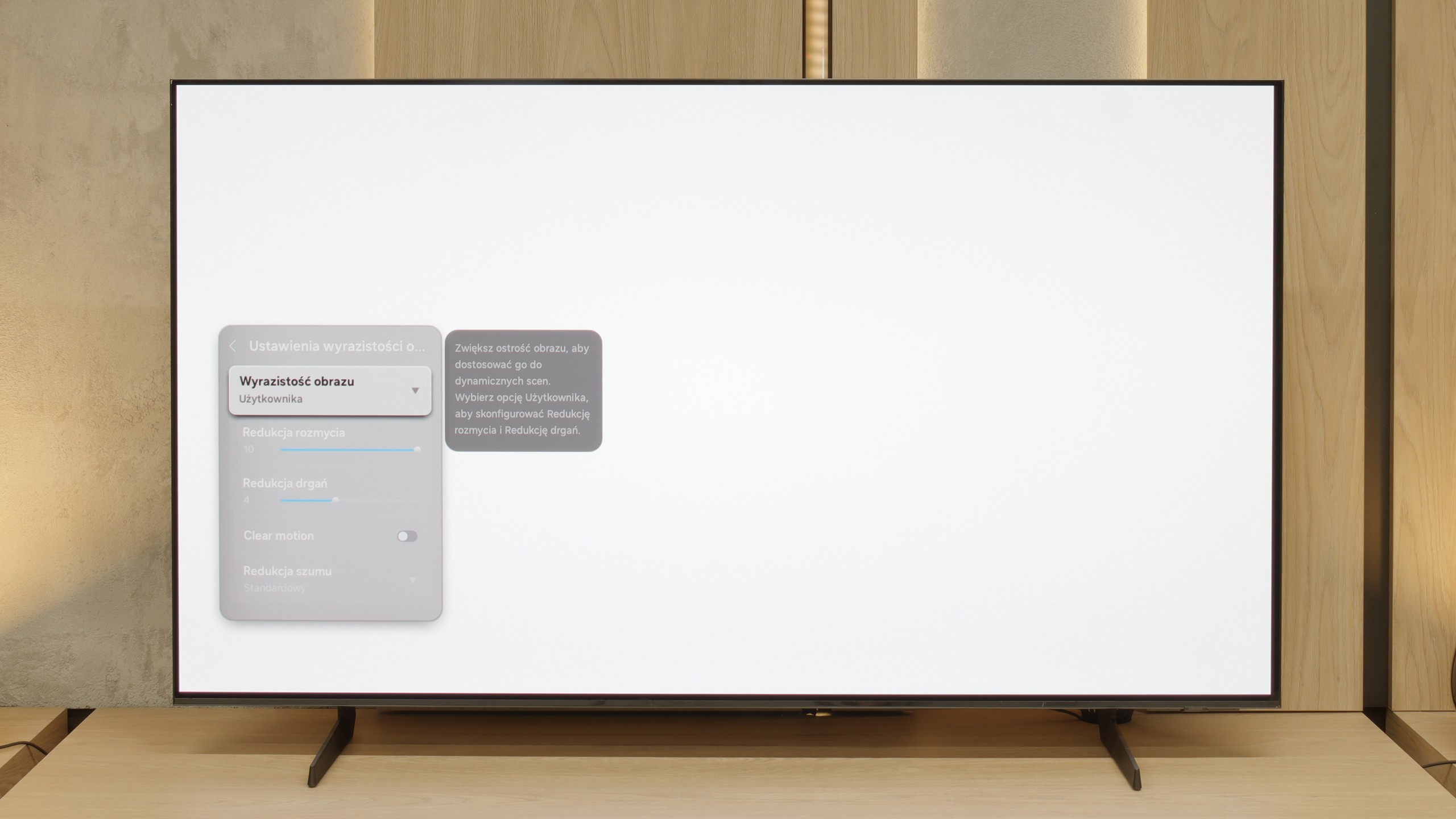
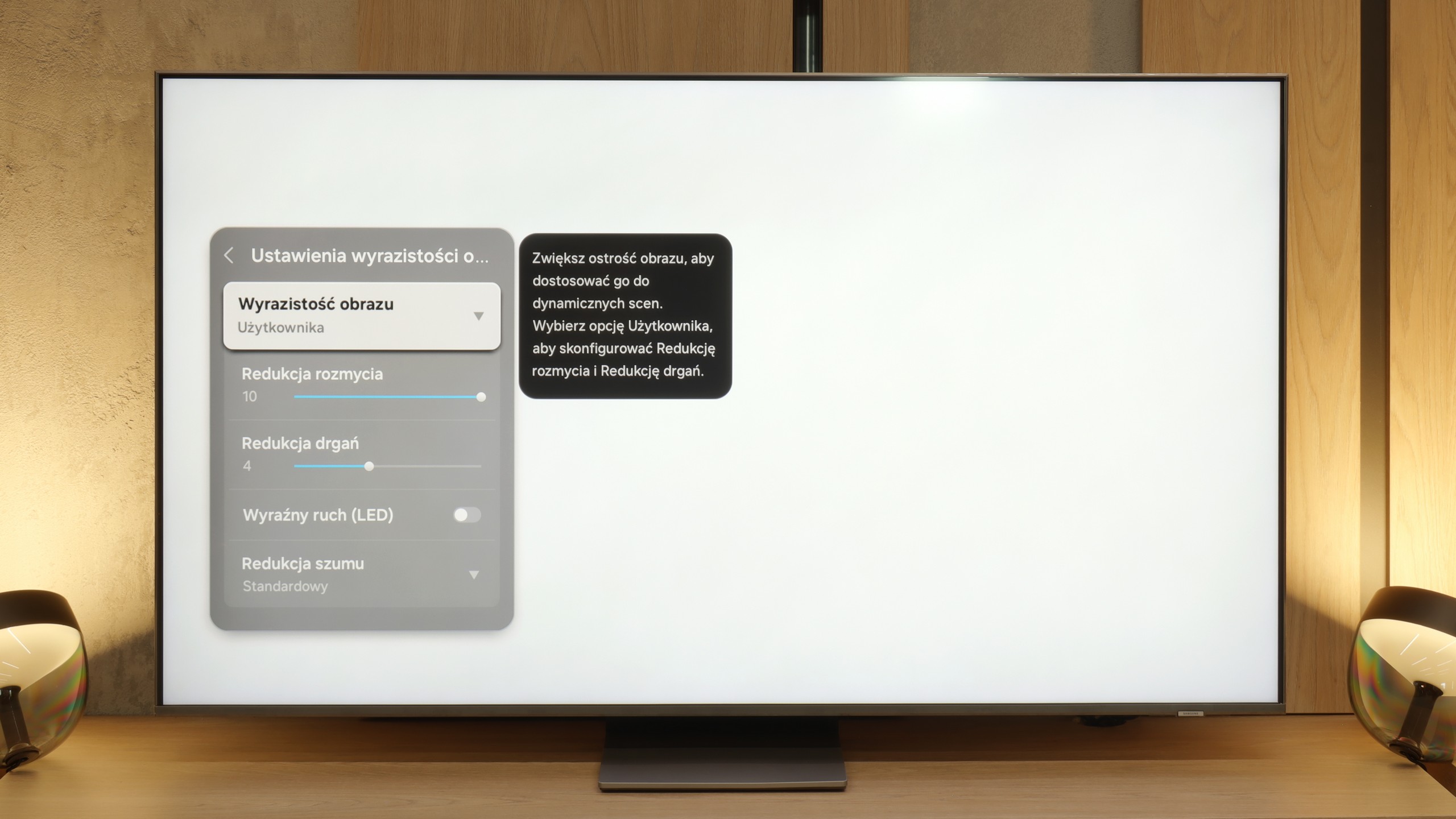
Blur (native resolution, maximum refresh rate):






Blur (BFI function enabled):
Image flickers in this mode



Image flickers in this mode



Smużenie (4K@60Hz Game Motion Plus):



Smużenie (4K@144Hz):



The S85F is a mind-blowingly fast television – and this is not just an empty phrase for effect. Thanks to the 120 Hz OLED panel, dynamic scenes, whether in games or while watching a live match, look exactly as they should – smoothly, sharply, and without the feeling that something is “slipping away” from the frame. The lightning-fast pixel response time, typical of OLEDs, plays its part here. Transitions between frames are virtually instantaneous, and the picture remains clear even during the fastest camera movements. A ball flying across half the pitch? A car racing in a chase scene? Here, everything is clear and free from the characteristic “trail” of LCDs.
This is exactly what we expect from a good OLED – no compromises when it comes to motion fluidity. The S85F gives the impression that regardless of the pace of the action, we can focus on what is happening on the screen, rather than the imperfections of the image.
Motion smoothing and fluidity in the QN85F is a topic worth discussing in more detail, as the television is equipped not with a standard 120 Hz panel, but with a 144 Hz one. The extra hertz will mainly be appreciated by PC gamers, but the mere presence of such an option can be seen as a nice addition and a sign of the times – it’s hard to complain about the trend towards faster panels, as in practice, each of us would prefer the image to be as smooth as possible. However, the most important thing is how the television handles typical 120 Hz refresh rates – in the case of consoles, sports, or films recorded at 24 or 30 frames per second. Here, the QN85F performs really well. In films, one can easily adjust the character of the image thanks to the "image clarity" function, where we find two adjustable sliders. Key for screenings is the one responsible for reducing judder. Lower values give the image a more cinematic character with preserved "frame rate," while higher values lead to strong smoothing reminiscent of television theatre.
Console compatibility and gaming features
8.2/10
8.2/10
- ALLM
- VRR
- VRR range48 - 120Hz48 - 144Hz
- Dolby Vision Game Mode
- Correct implementation of HGIG
- 1080p@120Hz
- 1440p@120Hz
- 4K@120Hz
- Game bar
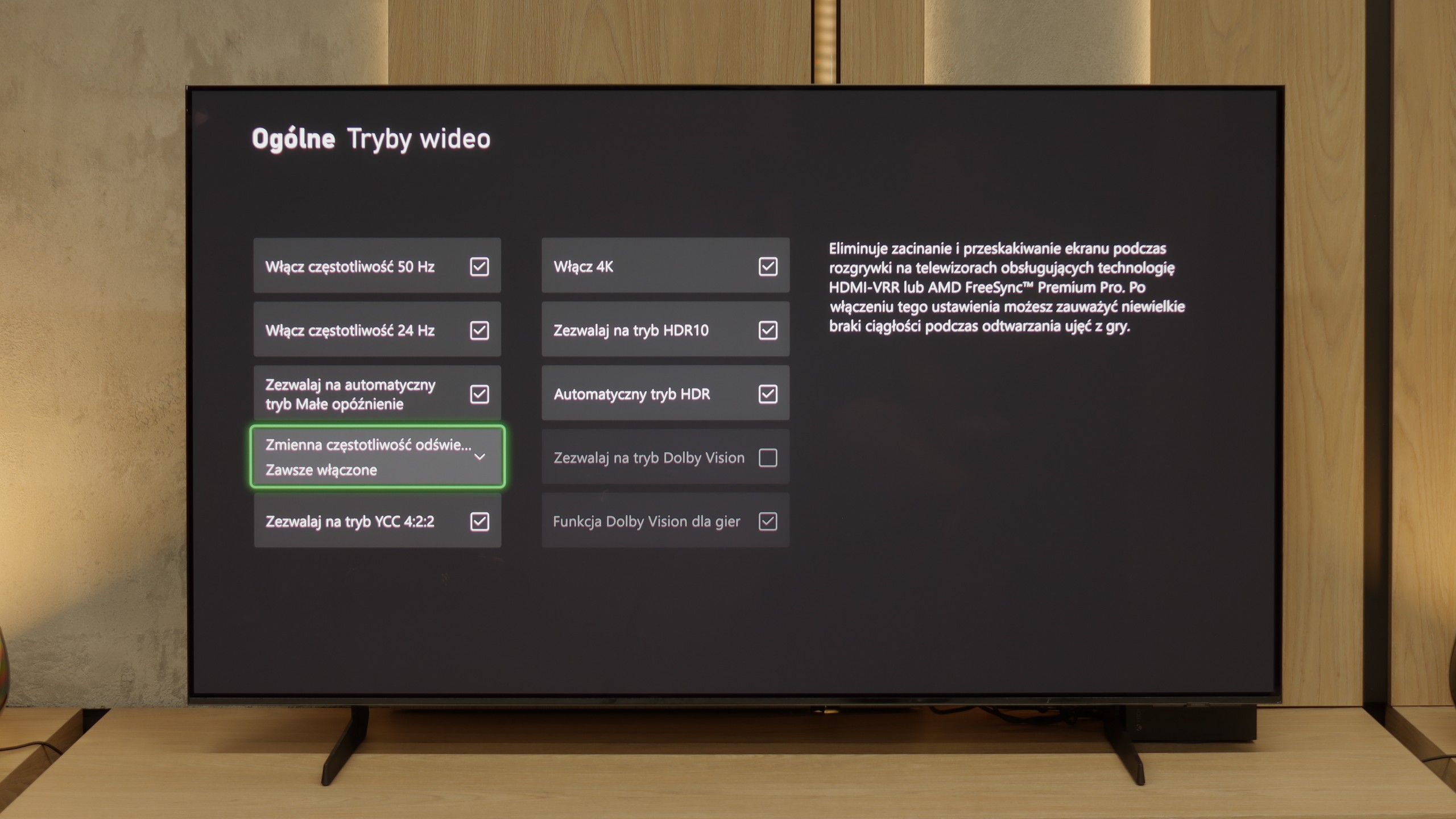
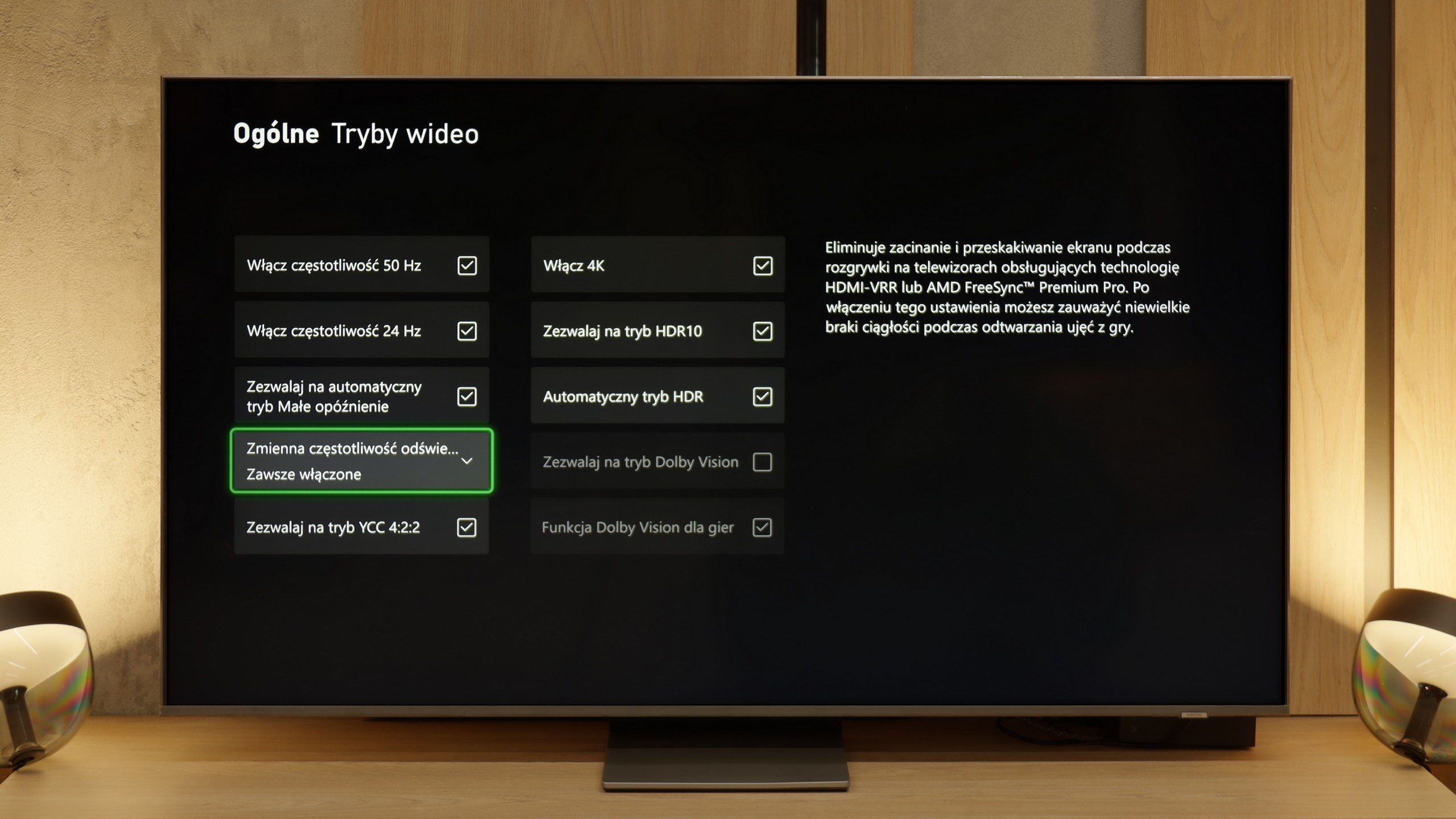
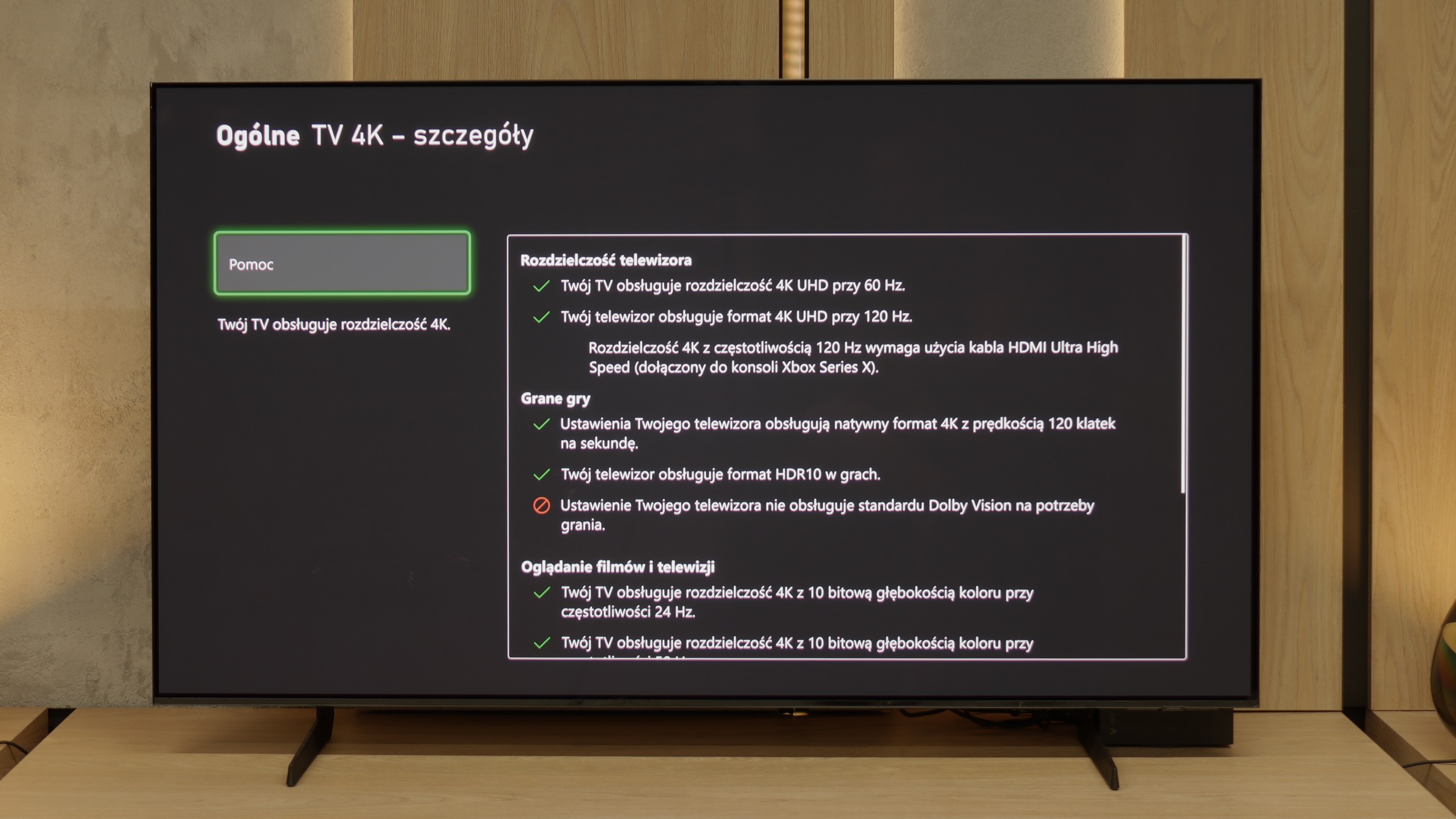
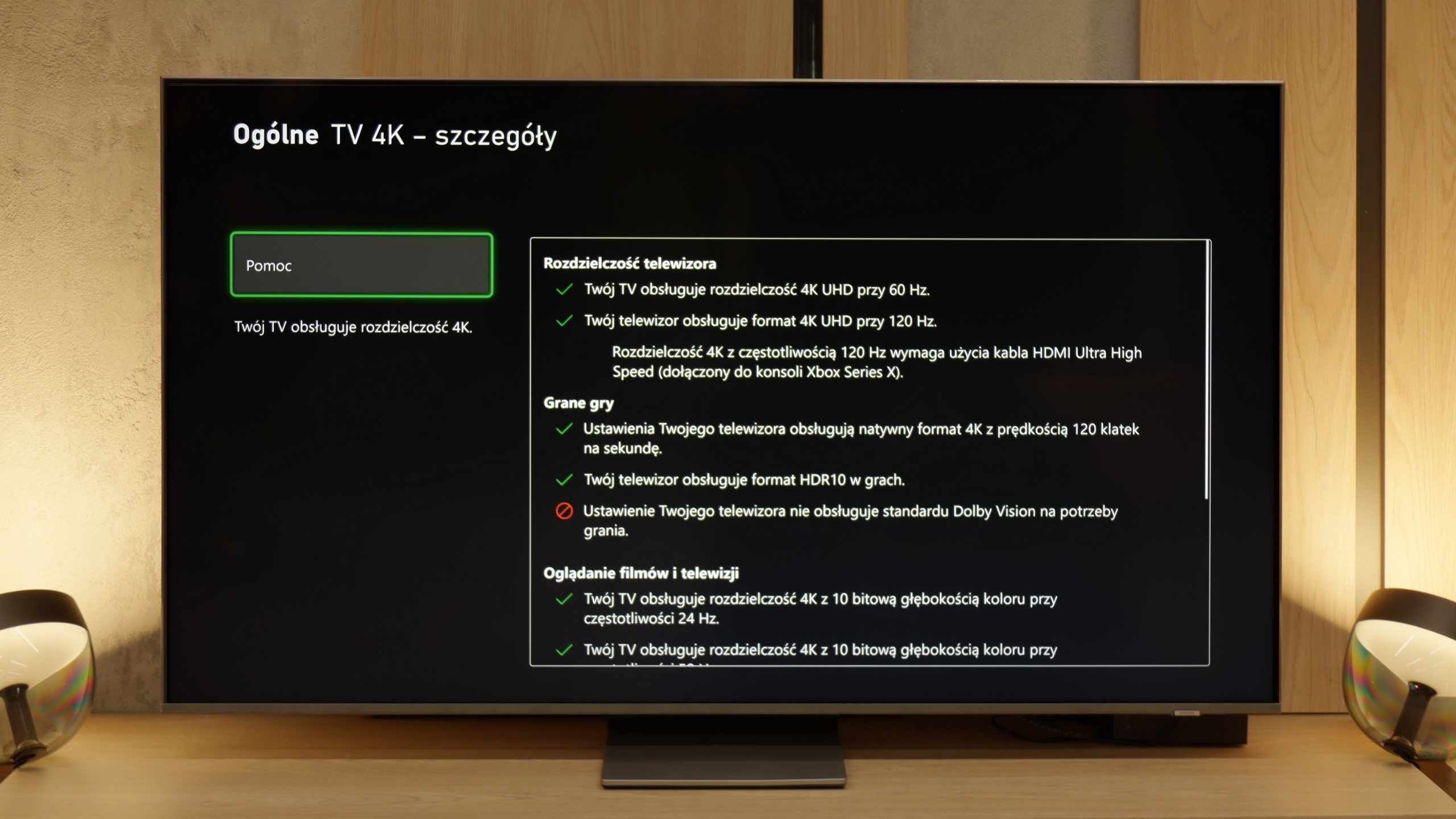
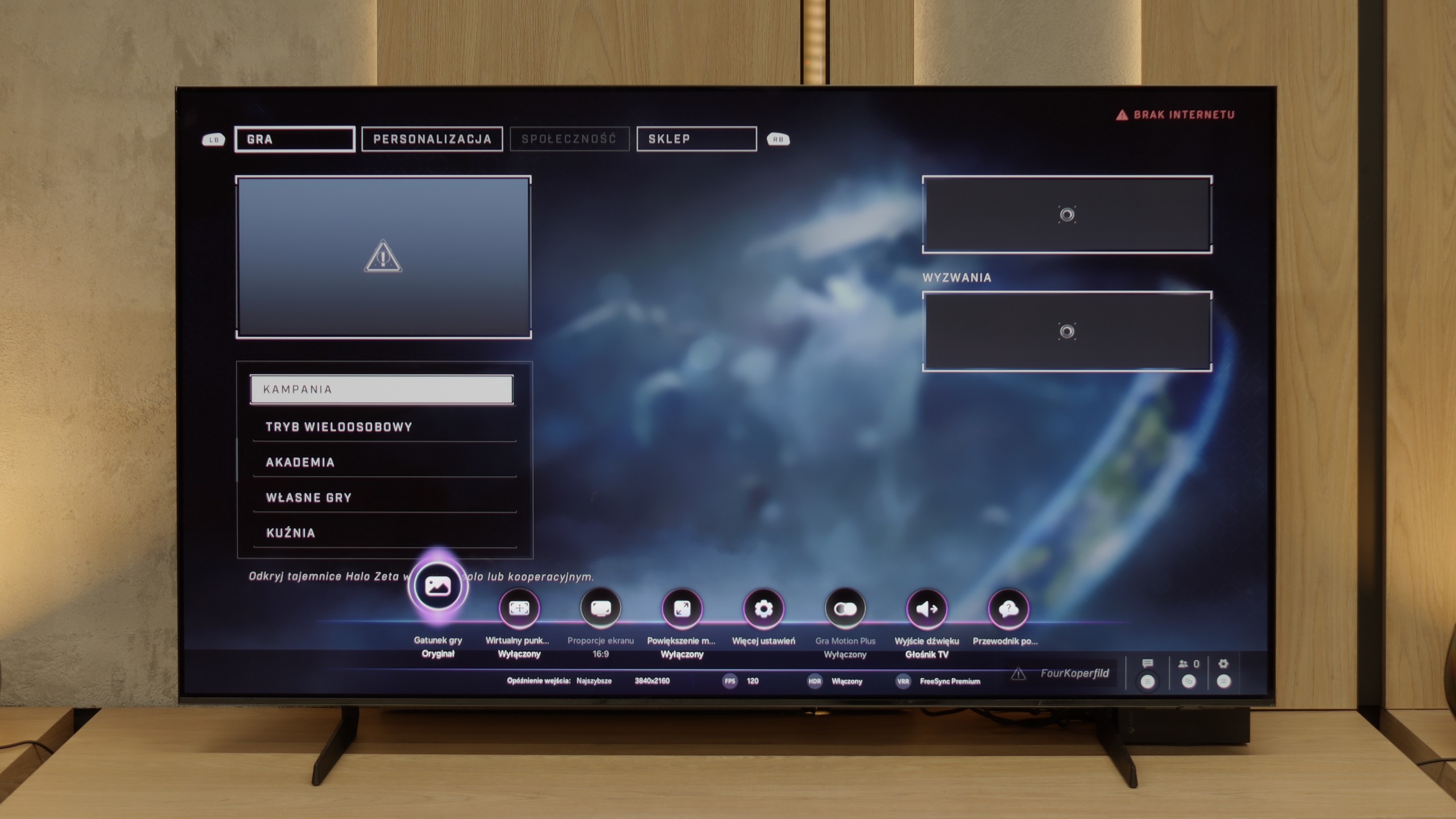
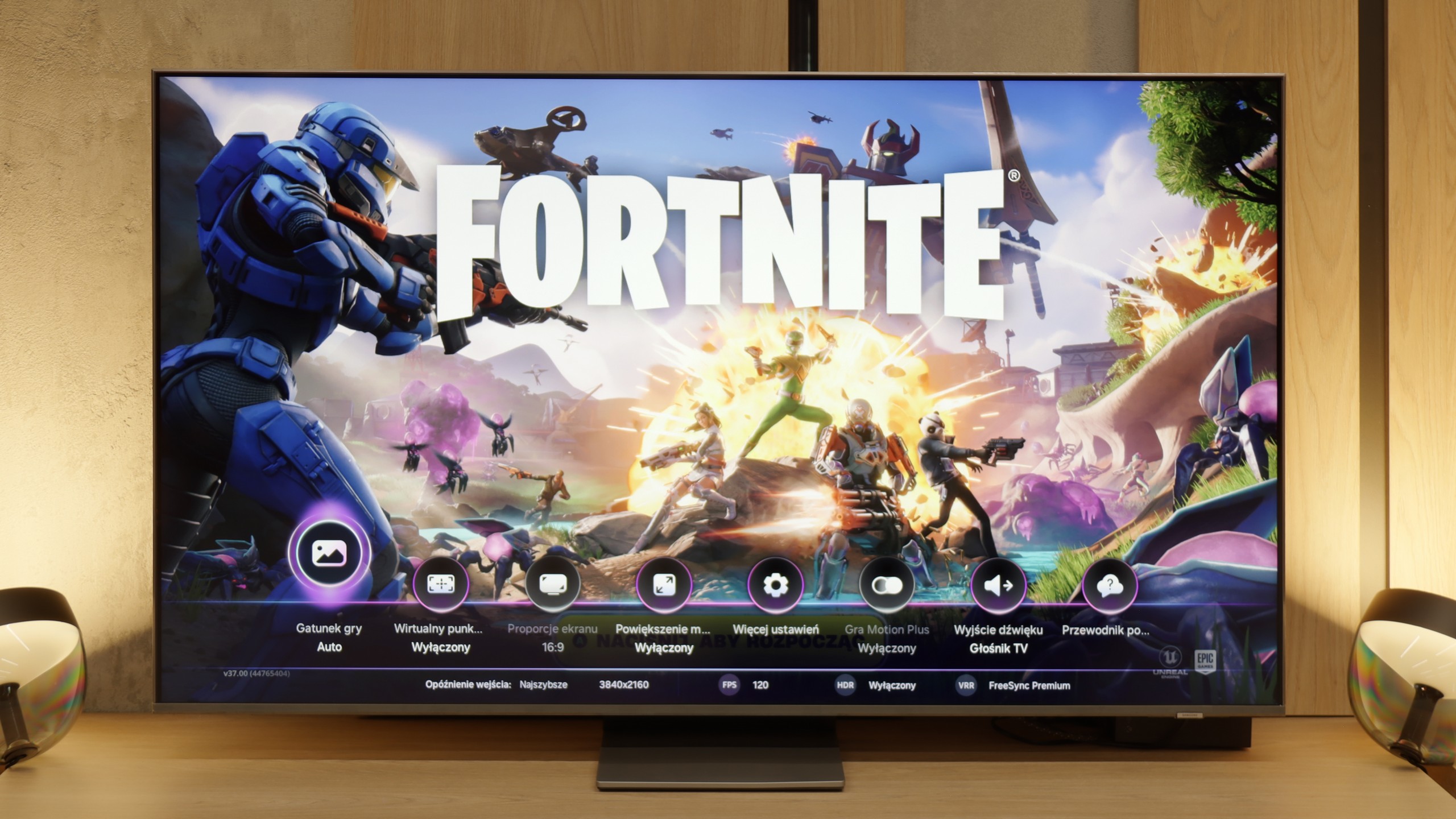
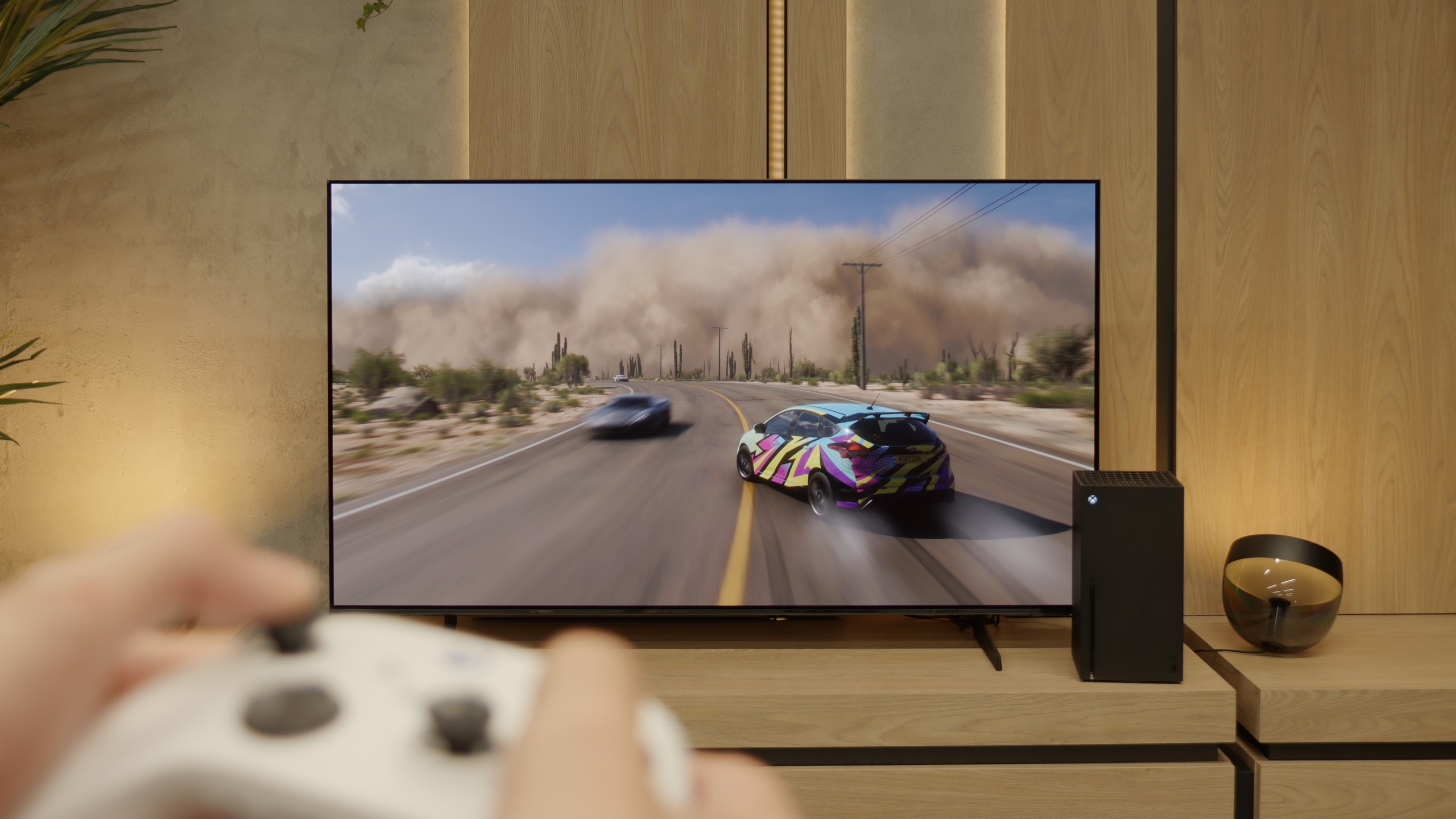
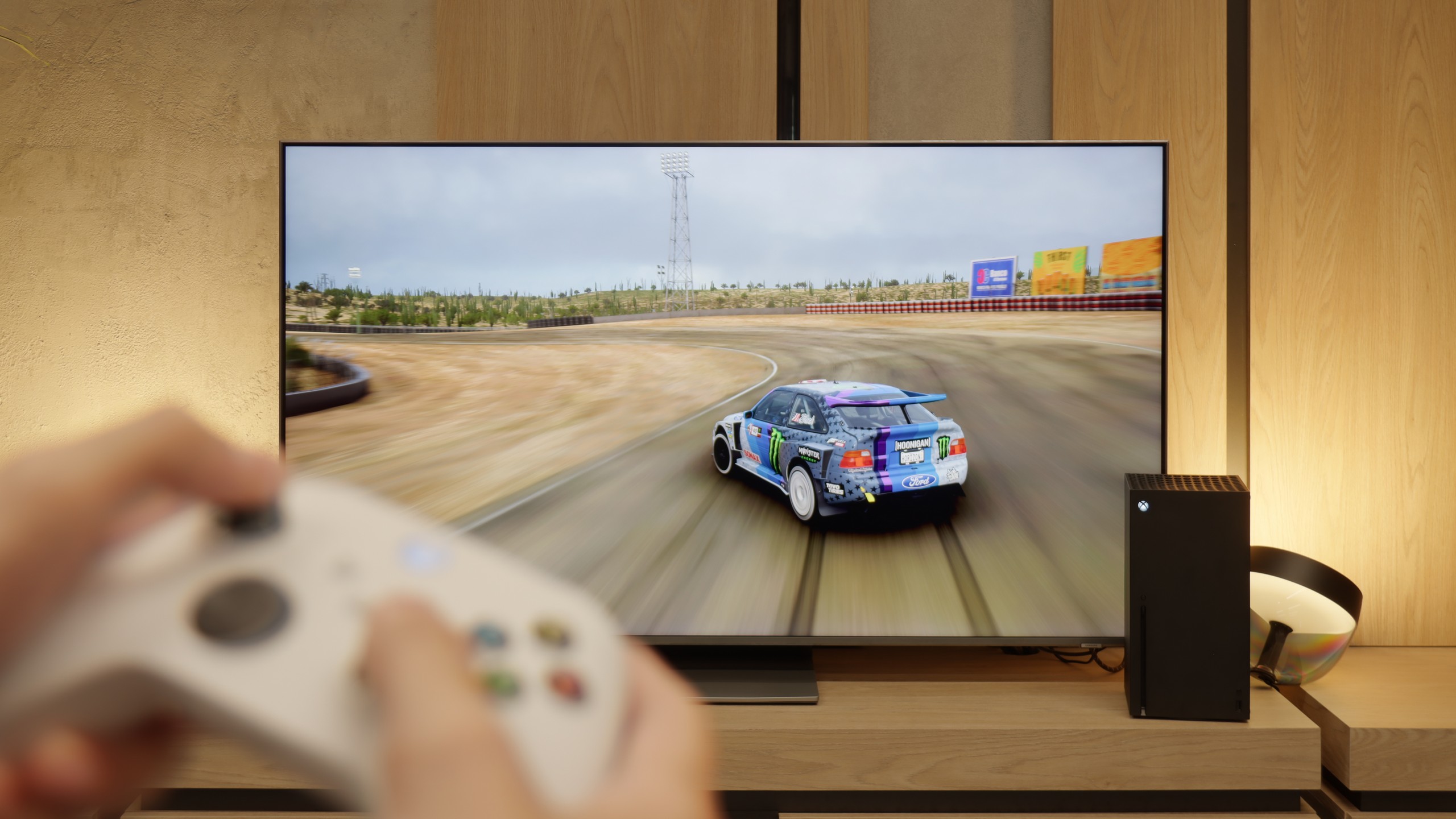
The S85F has practically everything on board to become the dream screen for gaming. Four full-fledged HDMI 2.1 ports with a bandwidth of 48 Gb/s, support for VRR, ALLM, a super-detailed Game Bar that clearly shows all parameters – and on top of that, a gem in the form of Game Motion Plus. This motion smoother makes animation in games more enjoyable, while input lag only increases slightly. This is a rare combination, and it’s a big plus for Samsung.
Now comes the moment when we need to complain a little. The lack of Dolby Vision in Samsung televisions has become standard, so there’s no point in hoping (unless something changes in a few years) – but the disappearance of HGiG after the software update is something hard to explain. HGiG (which stands for HDR Gaming Interest Group) is a mode that allows for precise reproduction of brightness in HDR games, in accordance with the creators' intentions. Without it, HDR calibration on a console becomes less precise, so we can end up with an image that is too dark in the shadows or excessively overexposed.
Perhaps Samsung will fix this in the next update – and we have high hopes for that. Because if HGiG returns, the S85F will become nearly the perfect television for gamers.
The Samsung QN85F makes a really great impression from the perspective of gaming features. We have four HDMI 2.1 ports here, so we can easily connect several devices simultaneously. There is also variable refresh rate (VRR) to prevent screen tearing, as well as automatic low latency mode (ALLM), which allows the TV to switch to the appropriate settings when we start the console. Additionally, it supports refresh rates of up to 144 Hz – something that PC gamers will particularly appreciate, but the mere fact that such an option is available shows that Samsung is committed to full support for gamers. The Game Bar panel also deserves praise. It provides a quick overview of key parameters – from frame count to refresh mode, right down to shortcuts for picture settings. Instead of digging through the entire menu, everything is at our fingertips, which turns out to be really convenient in practice. However, the most interesting addition is the Game Motion Plus feature. This is nothing more than a motion smoother brought into the gaming world. When turned on, the image becomes smoother, sometimes appearing as if we’re getting several more frames, and importantly – the response time doesn’t increase sufficiently to hinder gameplay. This is a solution that truly distinguishes Samsung's 120Hz televisions from the competition.
The only serious downside remains the lack of proper HGiG support. This is the standard responsible for proper tone mapping in HDR games, ensuring that brightness and contrast are displayed according to the creators' intentions. Without HGiG, we have to adjust the brightness manually, which doesn’t always result in the ideal outcome. The feature was available in previous models, but it disappeared in the QN85F after one of the updates. We hope that Samsung will quickly address this issue, and we will be monitoring whether it has been resolved.
Input lag
10/10
9.8/10
SDR
HDR
Dolby Vision
Here, dear players, the S85F shows its claws. 5 ms for 120 Hz content and around 10 ms for 60 Hz are results that can be described in one word in the world of televisions – phenomenal. This means that the reaction to our movements is practically instantaneous. We press the button, and the action on the screen happens without any delay, as if the television is reading our minds. In dynamic games, where a fraction of a second can decide victory or defeat, such values make a huge difference. There is no question of nervously "waiting" for the image to catch up with our movements. The S85F gives us the feeling that everything is completely under our control – and that is how it should be with equipment that aspires to be the perfect screen for gamers.
The input lag on the QN85F is at a very high level. With content at 120 or 144 Hz, the values often oscillated below 10 ms, which is a truly remarkable result. Naturally, when gaming at 60 Hz, the lag doubles, but it still remains low enough that in practice it is virtually unnoticeable. This means that the QN85F will perform well both in dynamic e-sports games and in more tranquil console titles.
Compatibility with PC
7.6/10
8.4/10
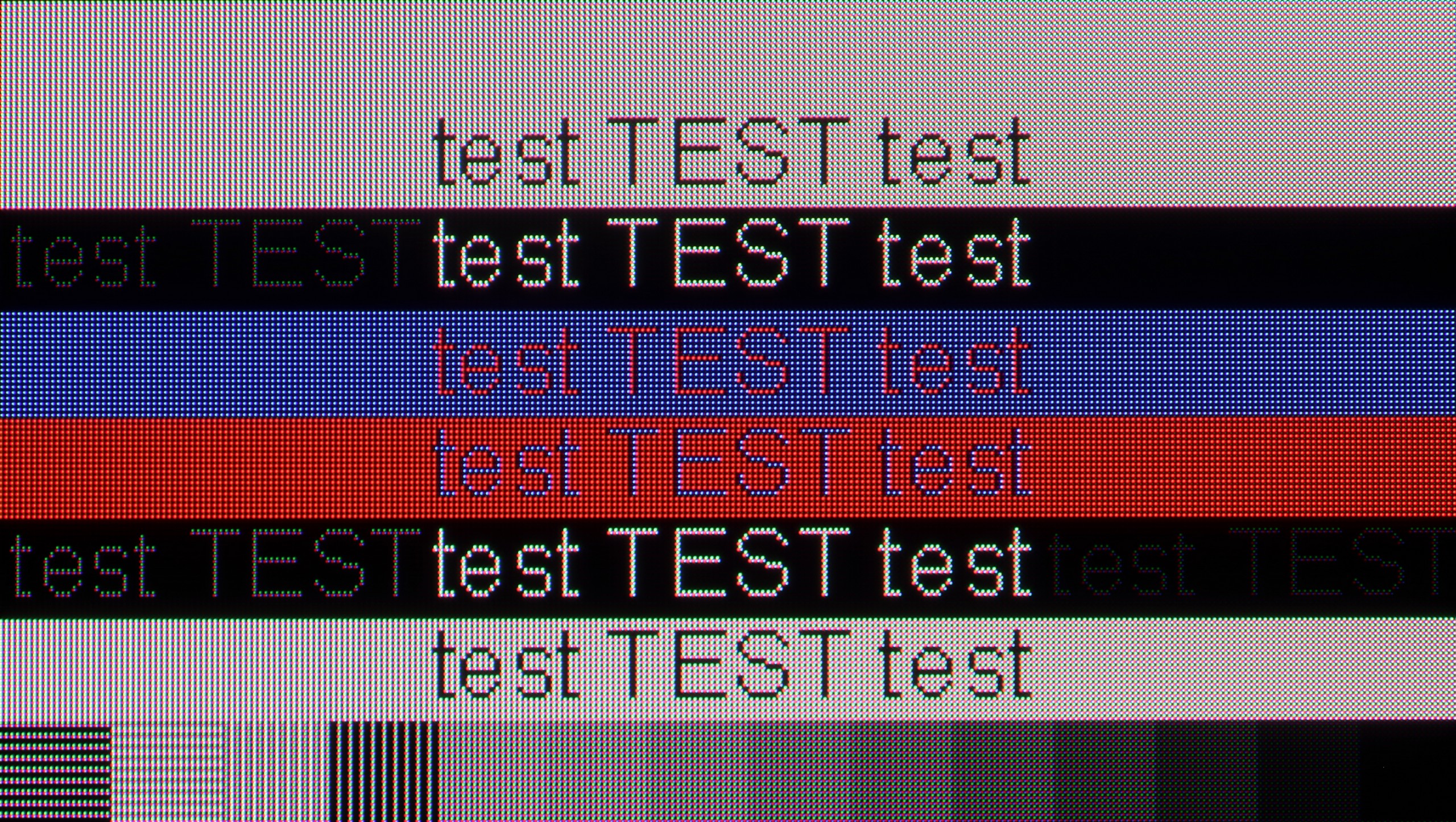
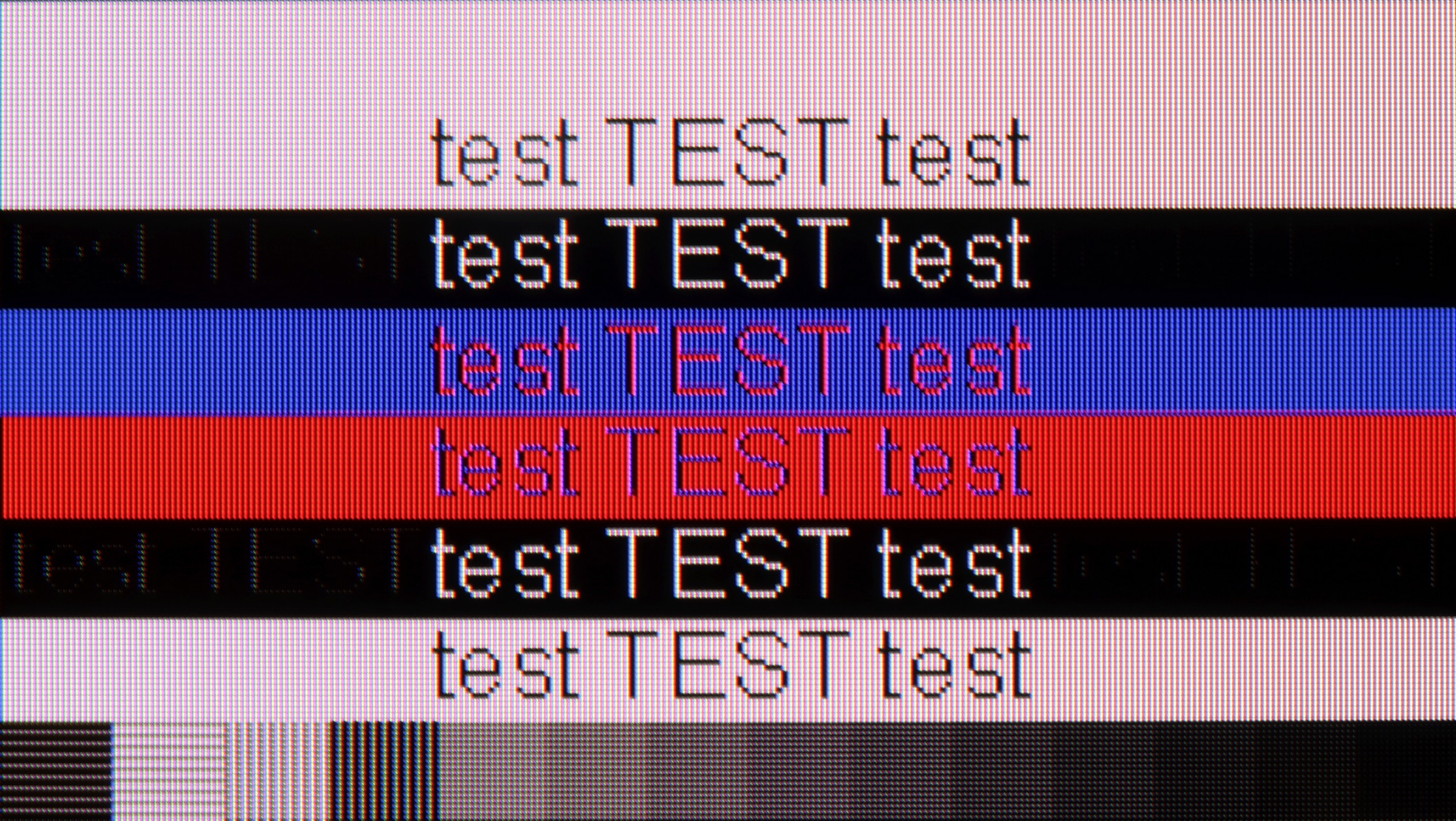
If you are planning to connect the S85F to a computer, we have good news – this television is great for that. Low input lag and a 120 Hz panel make gaming on PC a pure pleasure. Whether we are talking about dynamic shooters or more tranquil RPGs, the response is instant, and the fluidity of the animations can captivate you for hours.
Of course, there's no rose without thorns. Due to the diamond arrangement of the pixels in the QD-OLED panel, there is a slight effect of "rainbow icons", particularly noticeable when sitting close to the screen. Fortunately, this is rather a detail that most of you will not find bothersome in everyday use. Especially since, thanks to the correct implementation of chroma 4:4:4, the readability of fonts is at a very good level – documents, websites, and text editors look exactly as they should.
The QN85F performs really well in terms of cooperation with a computer. Thanks to the PC mode with a refresh rate of up to 144 Hz, support for G-Sync, and low input lag, playing on a personal computer is very enjoyable and shouldn't cause irritation even for more demanding gamers. The readability of the fonts is also good – the television supports chroma 4:4:4, so standard texts look sharp and clear. The problem arises only with very thin letters. Regardless of the refresh rate setting – whether it's 144, 120, or 60 Hz – horizontal, thin lines were poorly visible. Reducing the refresh rate slightly improved the situation, but never enough to say that they were displayed perfectly.
Viewing angles
9.8/10
3.2/10
Here, dear readers, the S85F reaches absolute peak performance. The viewing angles are phenomenal – one of the best you can get in a television today, thanks to the unique QD-OLED panel from Samsung Display. Of course, WOLED panels can also maintain a high level in this regard, but let's not kid ourselves – what the QD-OLED in the S85F demonstrates leaves an even greater impression. The colours, contrast, and brightness remain practically unchanged even when viewing the screen from a very wide angle. This is the kind of television where you don't have to fight for the "best spot on the sofa" – everyone will see the picture in all its glory, regardless of where they sit.
The viewing angles on the QN85F are the classic Achilles' heel of most LCD televisions with VA panels. Looking at the screen from an angle, the drop in brightness becomes noticeable quite quickly, the whites start to grey, and the colours lose their intensity. This is the price to pay for the high contrast that this technology offers. Samsung could have included a better coating to widen the viewing angles in this model, but it is not present here. In practice, this means that the best viewing experience is achieved when sitting directly in front of the television, and any significant deviation will result in a noticeable loss of image quality.
TV efficiency during daytime
5.1/10
6.9/10
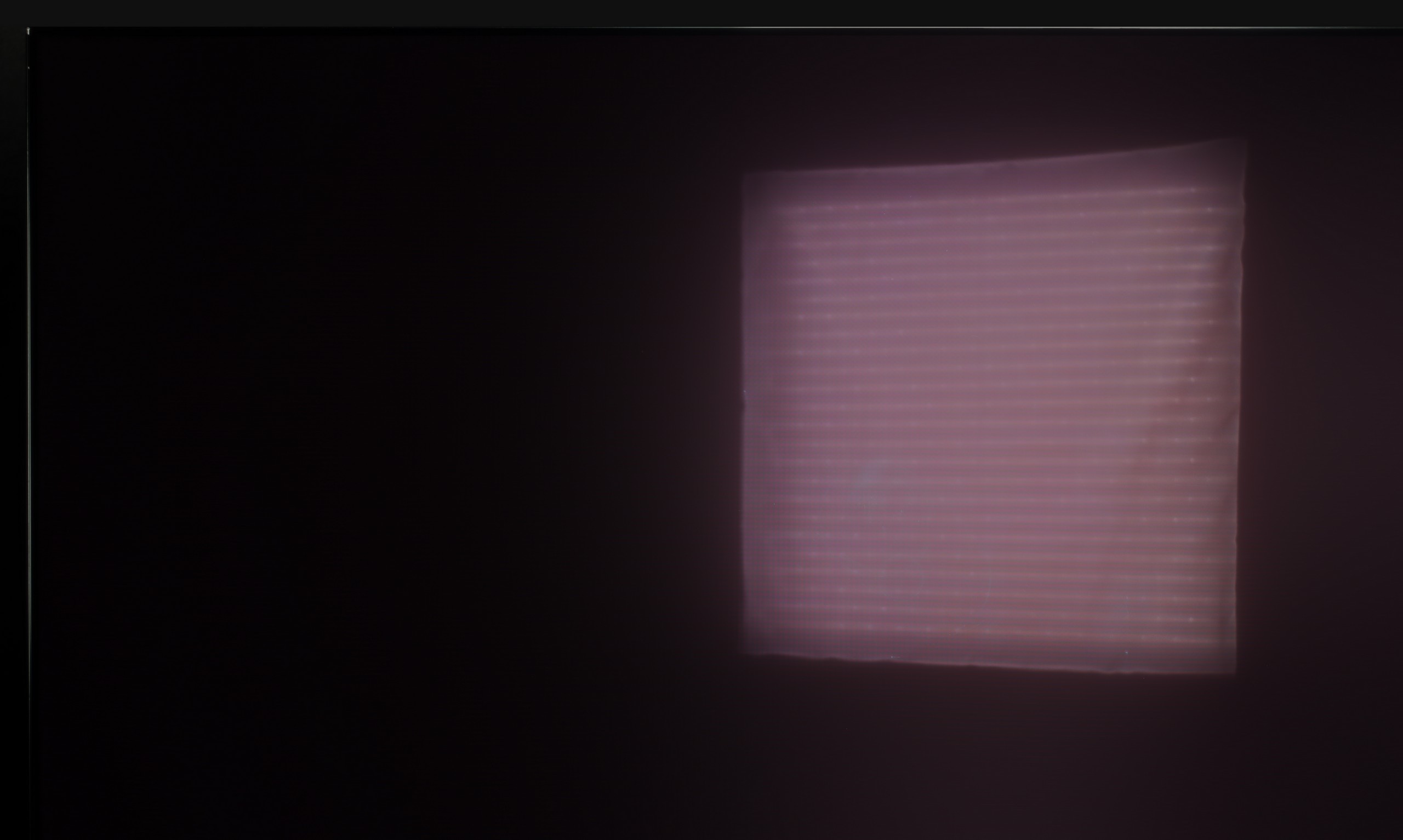
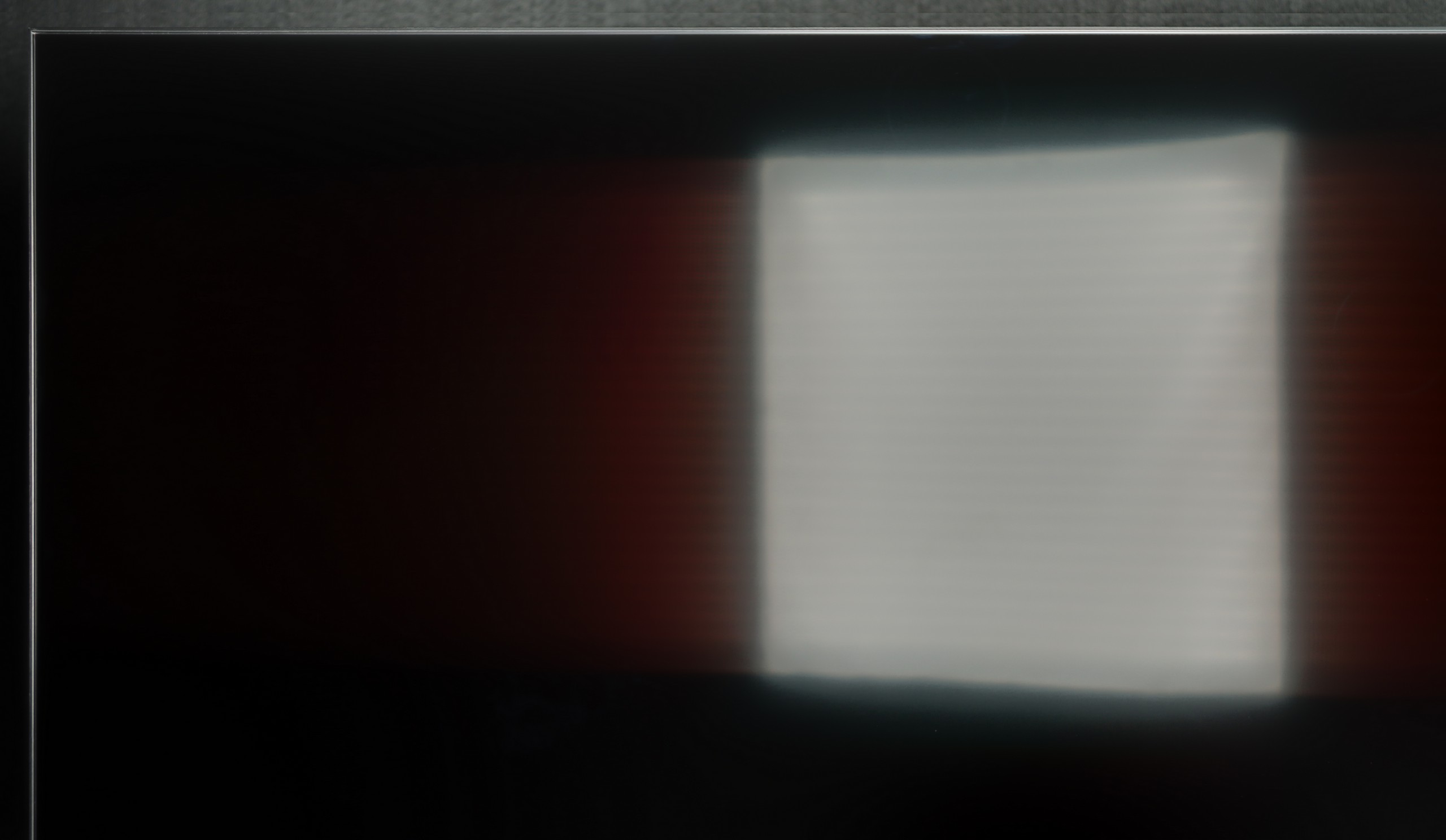


Matrix brightness
Average luminance SDR
Samsung QN85F : 690 cd/m2
Samsung S85F OLED: 317 cd/m2
We really liked the saying “there's no rose without a thorn” and it fits perfectly with QD-OLED display televisions. Especially when we look at their behaviour in strongly sunlit conditions. As you may notice, in very intense light, the surface of the panel can take on a slightly cherry hue. The effect is subtle in the case of the S85F, but in extreme lighting conditions, the black can perform a little worse than in WOLED panels. However – and this “however” is key here – QD-OLED significantly better suppresses direct light reflections. This means that reflections will be less bothersome, and the picture will maintain clarity even when something bright reflects off the screen. You win some, you lose some.
As for brightness, the S85F is a moderately bright OLED. It is not a model designed for extremely sunny living rooms. If you are planning to place it in a very bright room, we recommend considering blinds or placing it in a location that at least partially protects it from direct light.
The QN85F performs excellently during the day. The satin finish of the panel combined with high brightness makes it a television designed for bright rooms. Colours do not lose their intensity, and the picture does not fade even when a lot of light enters. The television itself is bright enough to handle a living room with large south-facing windows without any issues. Therefore, the QN85F provides us with an image that allows us to watch films or matches during the day without annoying reflections and the feeling that the picture disappears in the sunlight.
Details about the matrix
Subpixel Structure:
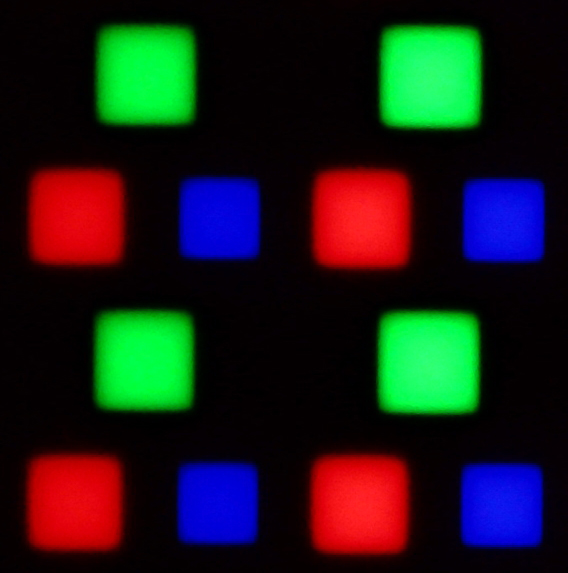
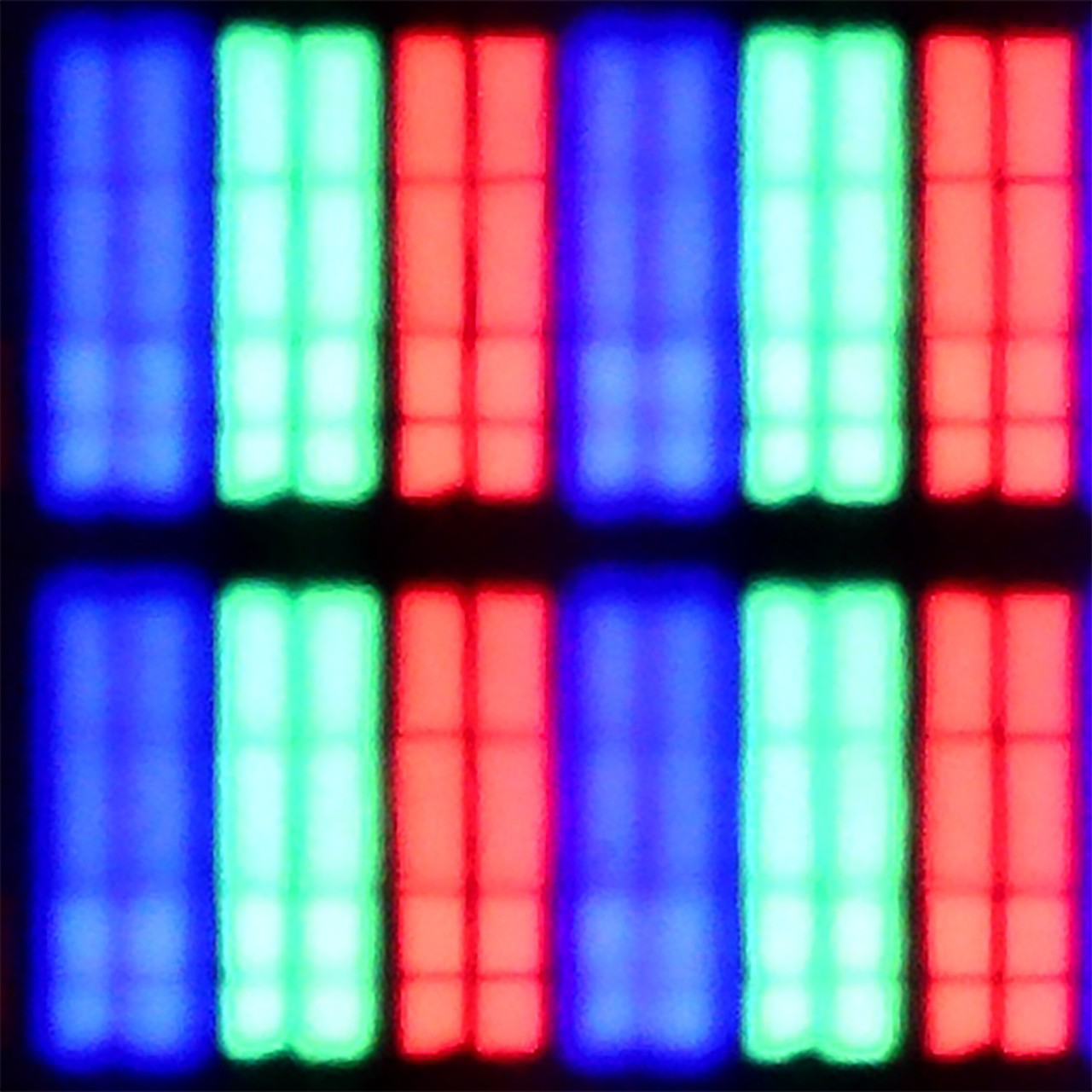
Panel uniformity and thermal imaging:


Samsung S85F OLED
Samsung QN85F
TV features
7.3/10
7.3/10
- HDMI inputs0 x HDMI 2.0, 4 x HDMI 2.1 48Gbps0 x HDMI 2.0, 4 x HDMI 2.1 48Gbps
- Other inputsToslink (Optical audio)
- OutputsToslink (Optical audio), eARC (HDMI), ARC (HDMI)Toslink (Optical audio), eARC (HDMI), ARC (HDMI)
- Network InterfacesWi-Fi 2.4GHz, Wi-Fi 5GHz, Ethernet (LAN) 100MbpsWi-Fi 2.4GHz, Wi-Fi 5GHz, Ethernet (LAN) 100Mbps
- TV receptionDVB-T, DVB-T2, DVB-S, DVB-S2, DVB-CDVB-T, DVB-T2, DVB-S, DVB-S2, DVB-C
Classic features:
- Recording to USB (terrestrial TV)
- Recording programming
- Picture in Picture (PiP)
- RF remote control (no need to aim at the screen)
- Backlit remote control
- Teletext
- Audio only mode
- Bluetooth headphones support
- Simultaneous Bluetooth headphones & TV audio
Smart features:
- AirPlay
- Screen mirroring (Windows Miracast)
- Voice search
- Voice search in native language
- Ability to connect a keyboard and mouse
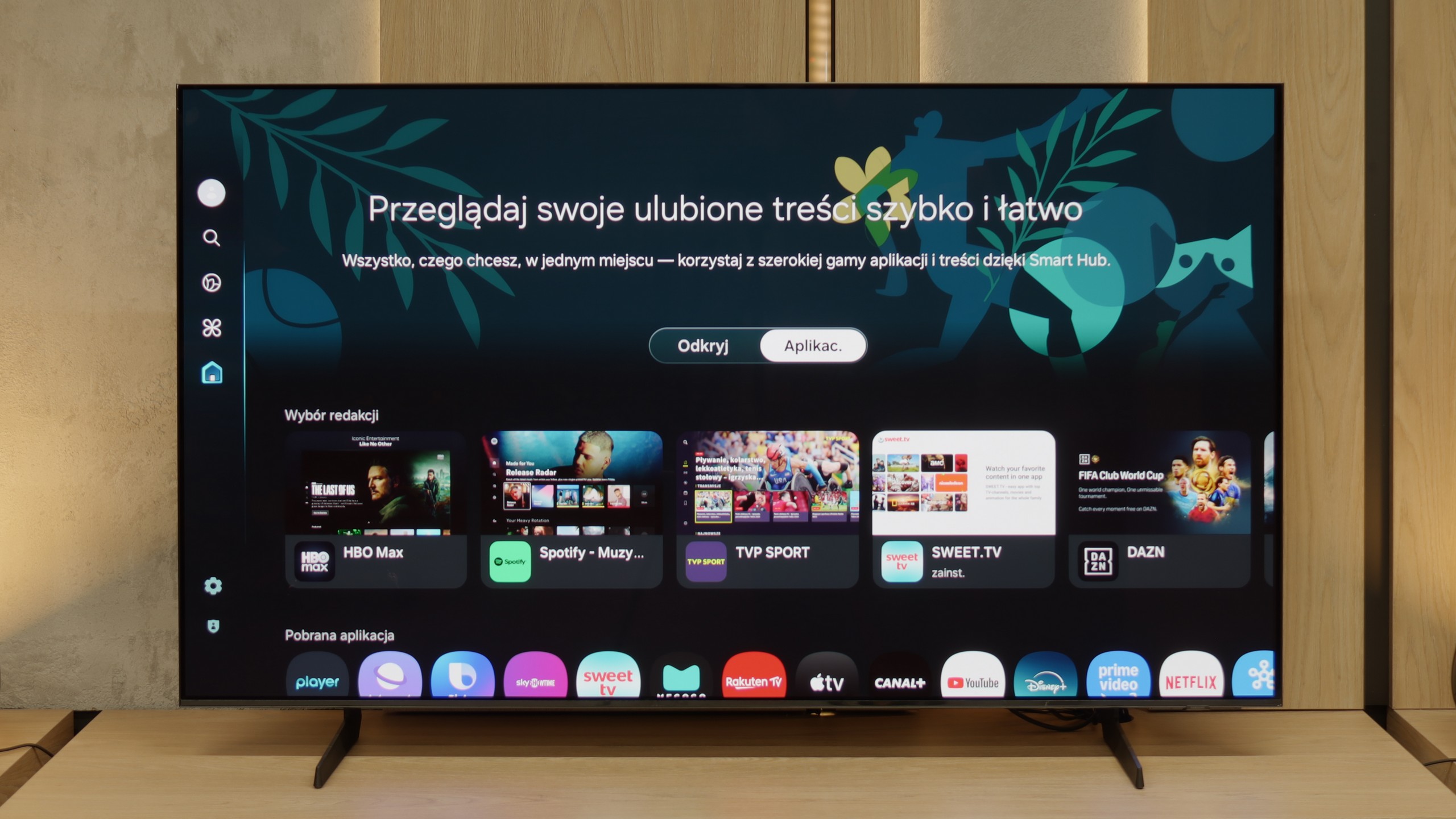
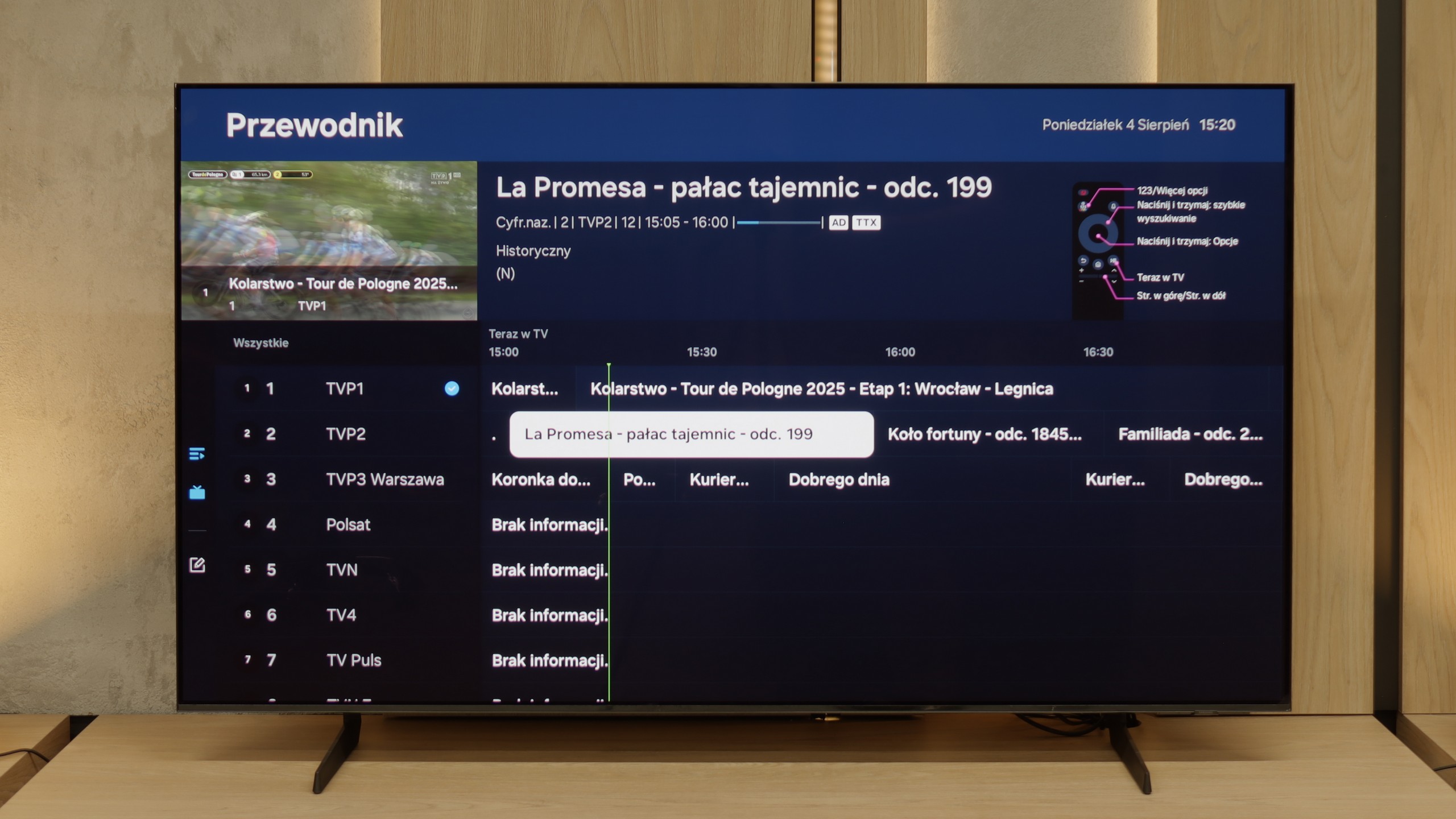
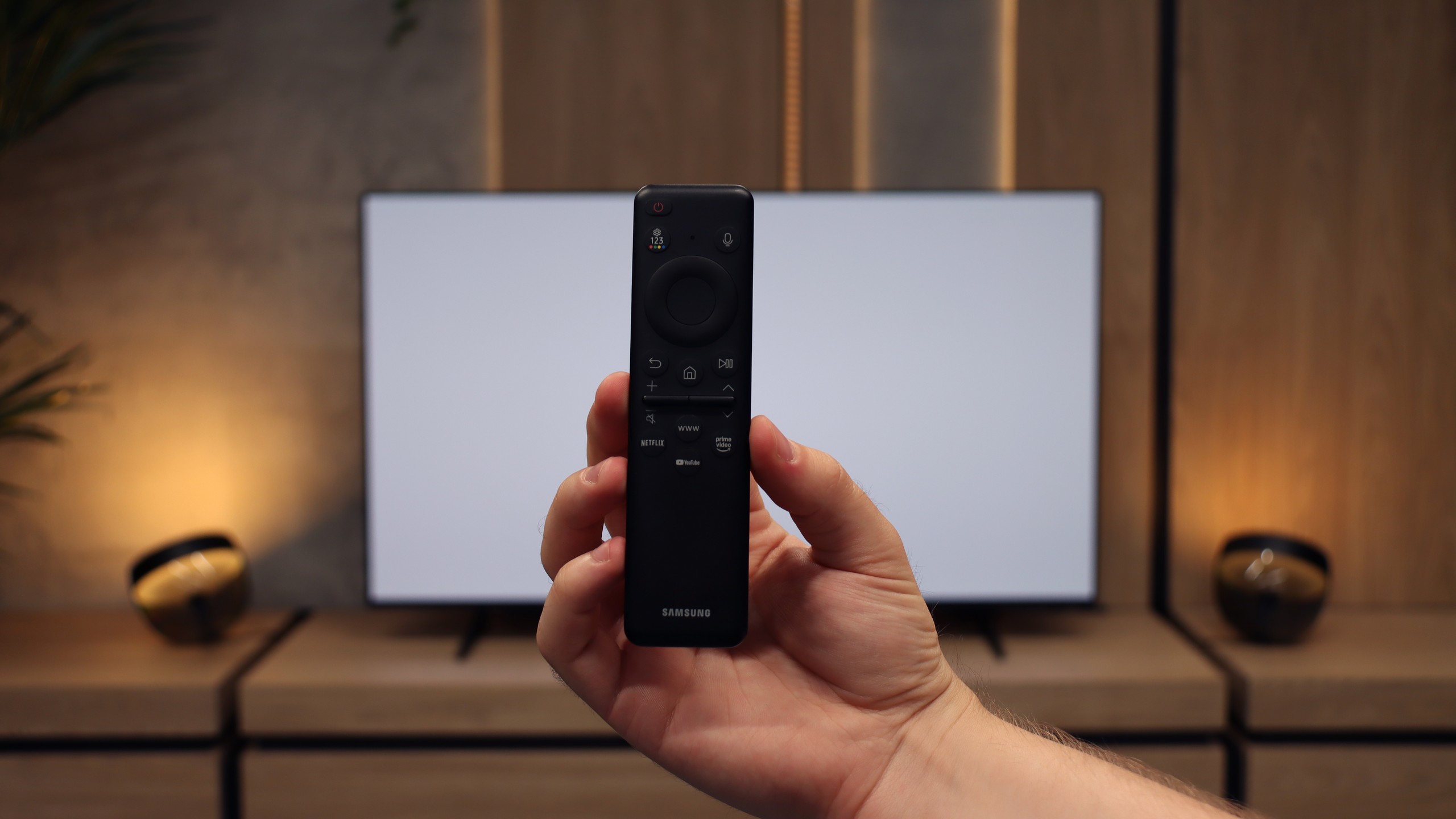
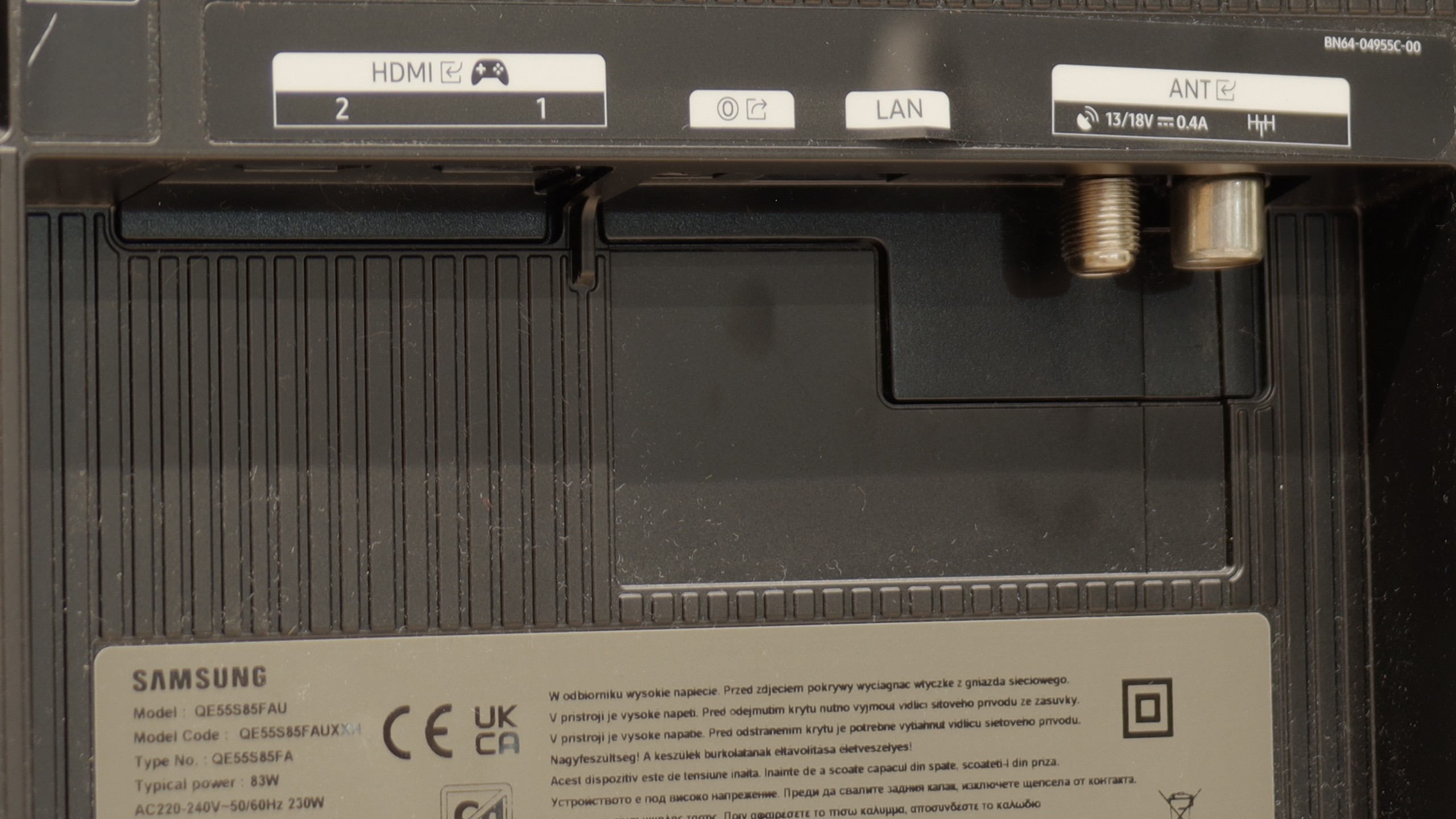
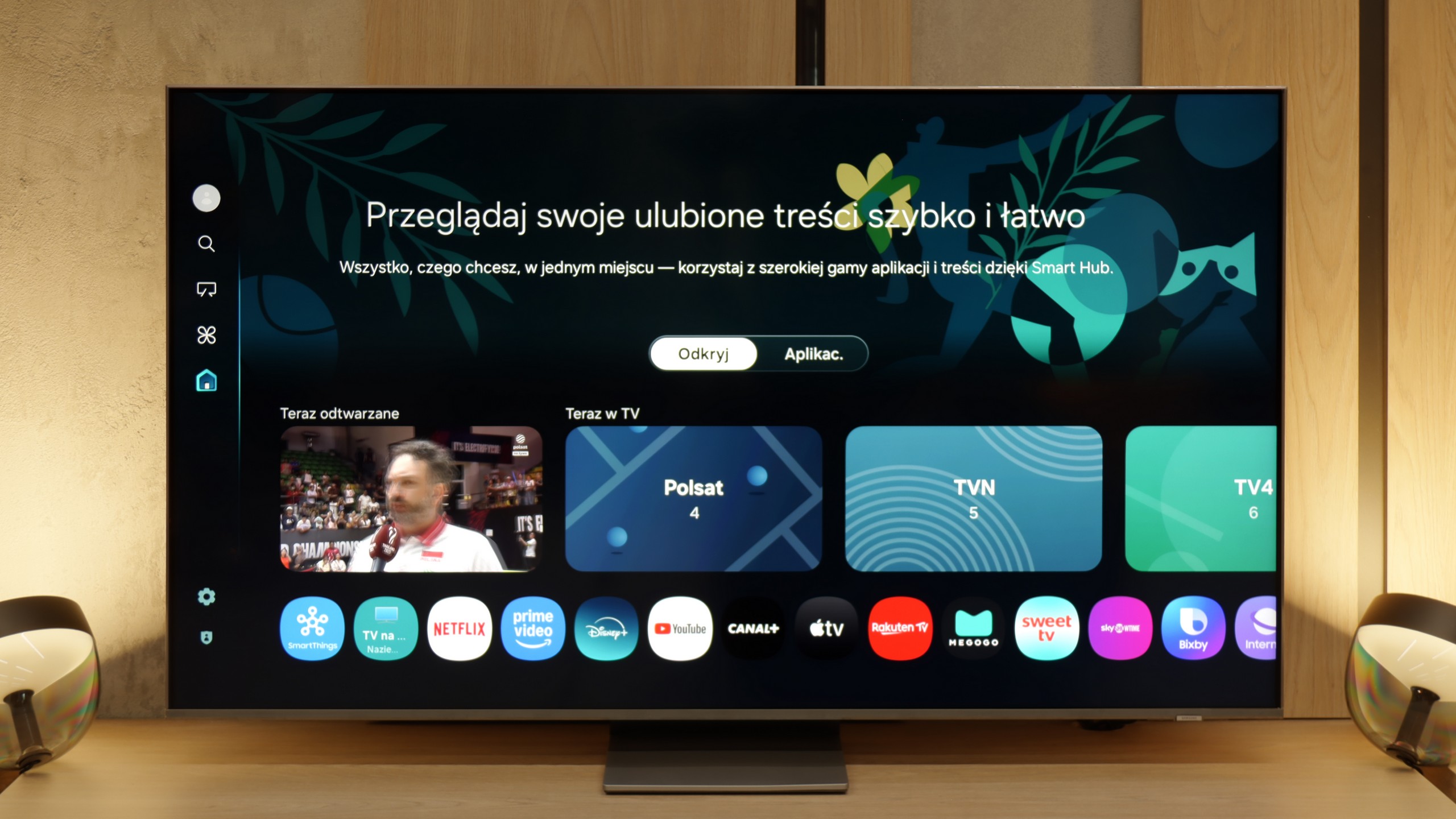
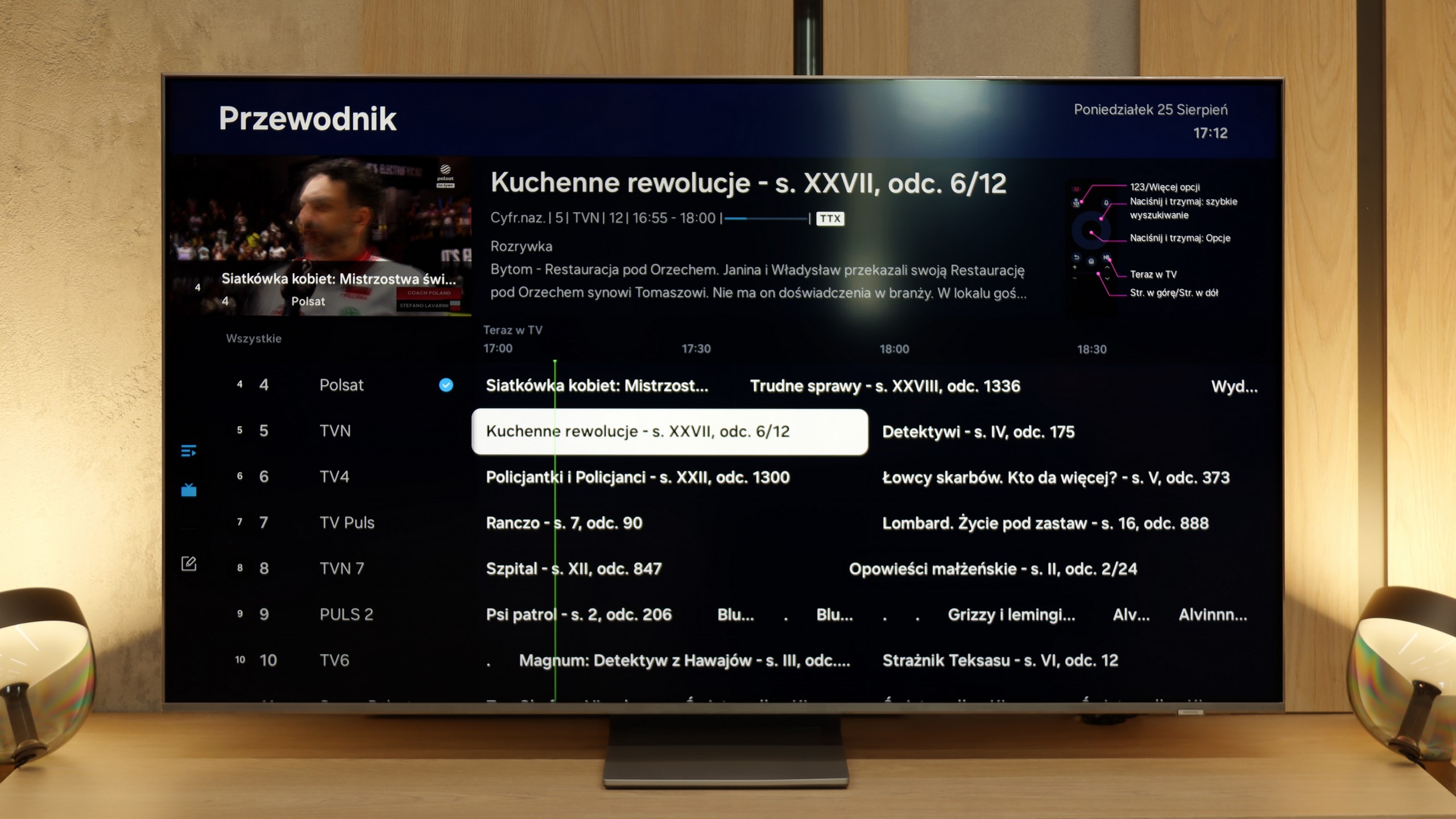
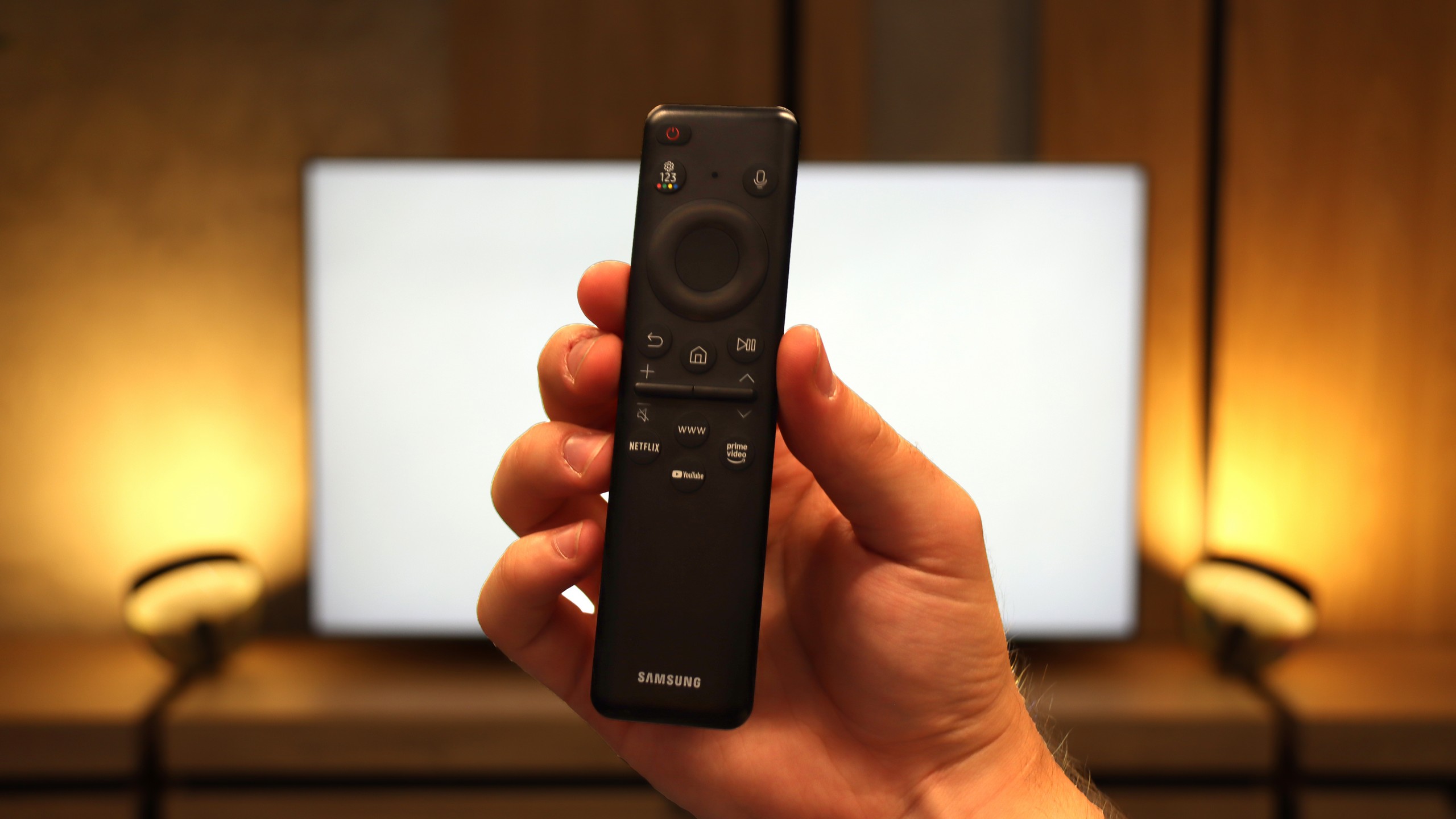
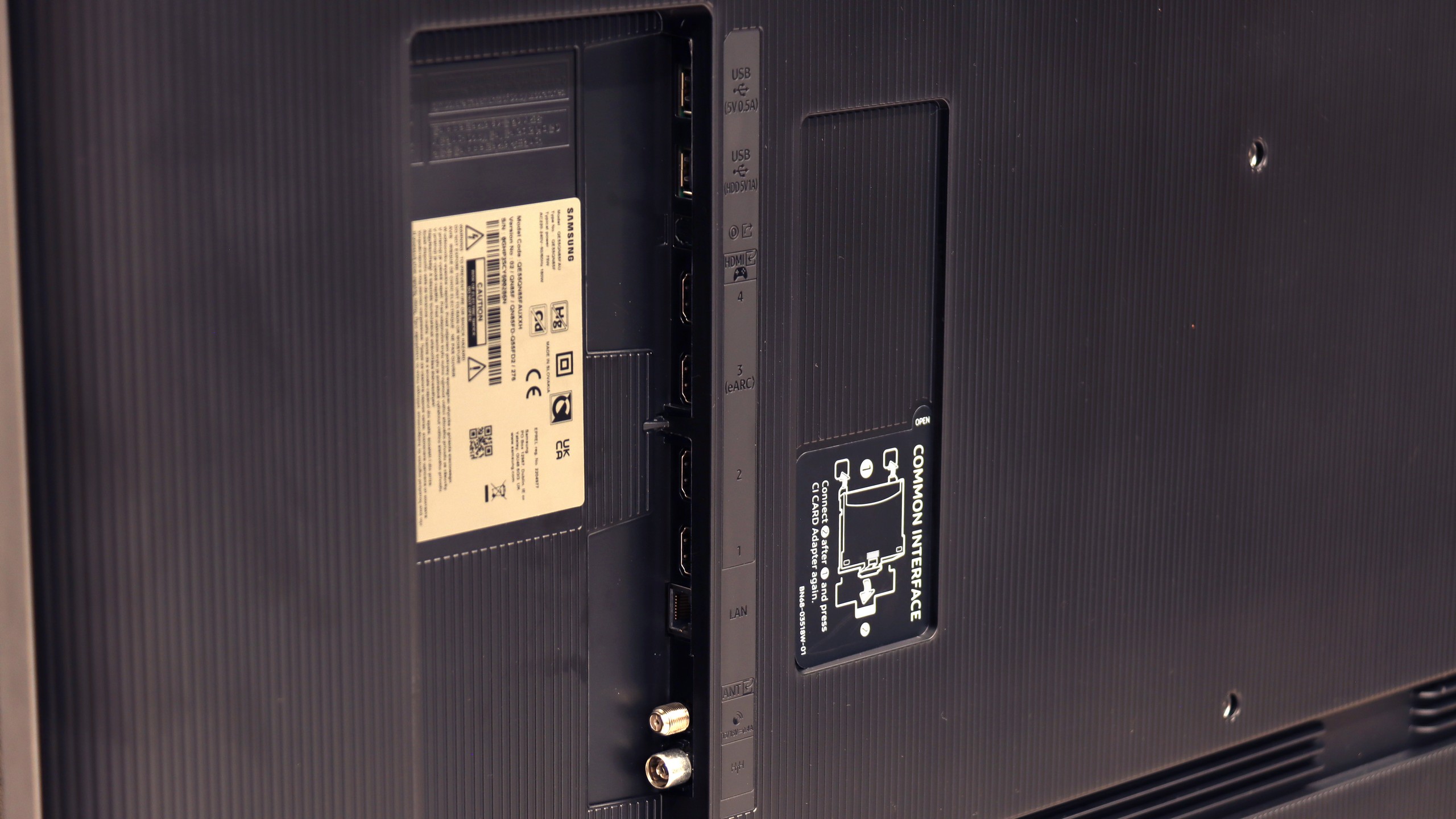
Classic TV Features of the S85F
The S85F was not really designed with fans of traditional television in mind. There’s no PiP feature (which is a bit surprising as Samsung usually offers it) nor the ability to record programmes to USB from the built-in tuners. Fortunately, the basics are present – teletext and a clear channel guide – so for regular, everyday viewing, that is more than enough. The included remote control, although simple and lacking a numeric keypad at first glance, allows you to control multiple devices. This means that when connecting, for example, a Canal+ decoder, you don’t need to have two remotes on the table – the one for the television is quite sufficient.
SmartTV S85F: Tizen
The smart part is a completely different story. Tizen is one of the most advanced operating systems in televisions. It operates smoothly, supports all popular internet functions – from screen mirroring, through AirPlay, to voice search. The strongest feature of Tizen is its integration with the SmartThings app, which can serve as the control centre for the entire home. Of course, like any closed system, Tizen has its limitations – for example, in the form of a smaller app library compared to GoogleTV. However, looking at the current list of available apps, it is hard to pinpoint anything that might actually be missing.
Smart TV and Tizen System
The Samsung QN85F runs on the proprietary Tizen operating system, which has been one of the strongest points of the Korean manufacturer for years. The platform operates quickly, is well-developed, and provides access to virtually all necessary applications. It supports AirPlay, allows screen mirroring, voice search, and has a very clear interface. It is all controlled by a remote with a minimal number of buttons, designed for quick access to the most important applications.
Classic TV Features
In terms of classic television functions, the QN85F offers a rather basic set. The EPG interface is readable and easy to use, resembling a traditional teletext programme list. A drawback is the lack of USB recording and the absence of PiP functionality, which Samsung has offered in many other models. This is due to the use of single tuners in the QN85F. For some, this may be a disadvantage, but considering how few viewers today use traditional linear television, it may not matter much to the majority of users.
SmartThings and Device Support
A strong element of the entire platform is the SmartThings application. Thanks to it, we can integrate the television with other home devices – not just those from Samsung. We can connect smart lighting such as Philips Hue or Yeelight, video doorbells, and many other devices to the system. SmartThings also allows us to control the television without using a traditional remote – we can use the app on a smartphone, mouse mode, or gesture control if we have a Samsung watch. This makes the QN85F part of a larger ecosystem and fits perfectly into the smart home IoT trend.
Playing files from USB
9.1/10
9.1/10
Supported photo formats:
Maximum photo resolution:
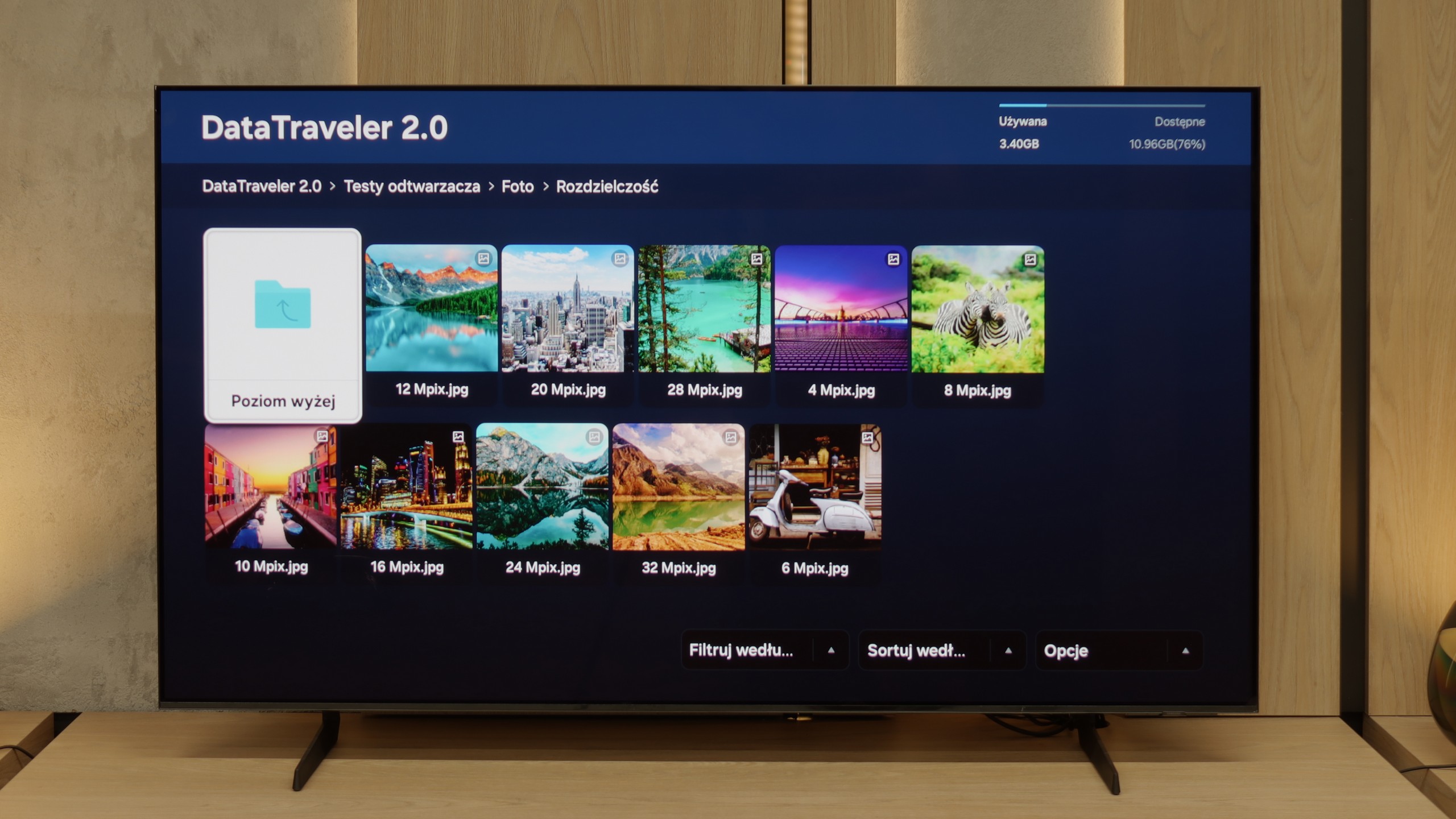
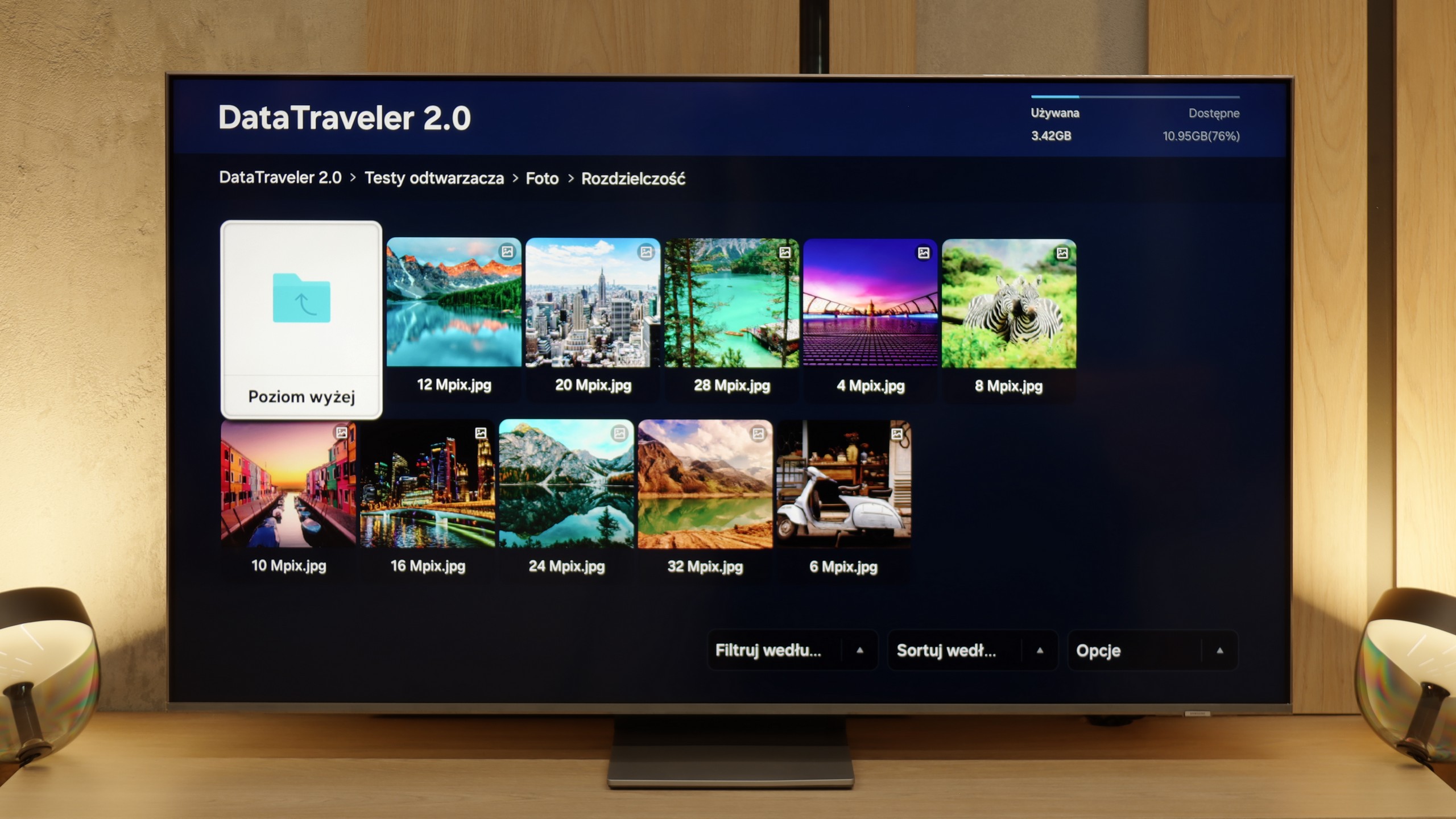
The built-in media player in the S85F performs excellently – practically everything you put on a USB drive or hard disk will be played back without the slightest problem. Minor shortcomings appear only in the handling of some less popular photo formats, but for the vast majority of you, this will be more than sufficient. So, it can be confidently stated that for home use, the built-in player is more than solid.
The player in the QN85F works as most people expect; it supports practically all popular formats and is more than sufficient for even the more demanding users. Movies, music, photos – everything runs smoothly. The only hiccup occurs with HEIC files, which are photos from Apple devices. According to the specifications, they should work, but in practice, they simply do not open. Thumbnails are visible, but the file refuses to launch. This seems to be a common software glitch. Aside from that one issue, the player performs well and does not give rise to complaints.
Apps
8.7/10
8.7/10














































Sound
7.2/10
7.6/10
- Maximum volume80dB84dB
- Dolby Digital Plus 7.1
- Dolby True HD 7.1
- Dolby Atmos in Dolby Digital Plus (JOC)
- Dolby Atmos in Dolby True HD
- DTS:X in DTS-HD MA
- DTS-HD Master Audio
Built-in speakers with a power of 20 W on paper may not make a big impression, but in practice, the S85F can surprise. It sounds really pleasant, and at times you can even catch a subtle bass, which is not a given in this class of speakers. The TV does not support DTS format, which has unfortunately become the standard for most manufacturers by 2025. A nice surprise, however, is the support for Dolby Atmos. Of course, talking about "spatial" sound in the case of two speakers placed at the bottom of the casing would be a slight exaggeration, but it's good that Samsung offers such a feature in this model at all.
The Samsung QN85F is equipped with a 2.2 system with a power of 40 W, and when it comes to built-in speakers, it performs really well. The bass is pleasant, and the dialogues are clear and easily heard even during louder scenes. Even at maximum volume, the television does not produce any unwanted vibrations and nothing crackles. At the bottom of the casing, there is a subwoofer responsible for the bass – therefore, when installing, it is worth ensuring that it is not obstructed by anything.
As for formats, the QN85F does not support DTS:X audio, which has been a standard from Samsung for several years now, forcing Blu-ray enthusiasts to connect audio devices first to the home cinema and then to the television. However, in return, we receive support for the more popular Dolby Atmos format, which can add additional space to sound in films and series.
Acoustic Measurements
80dBC (Max)
75dBC
84dBC (Max)
75dBC


